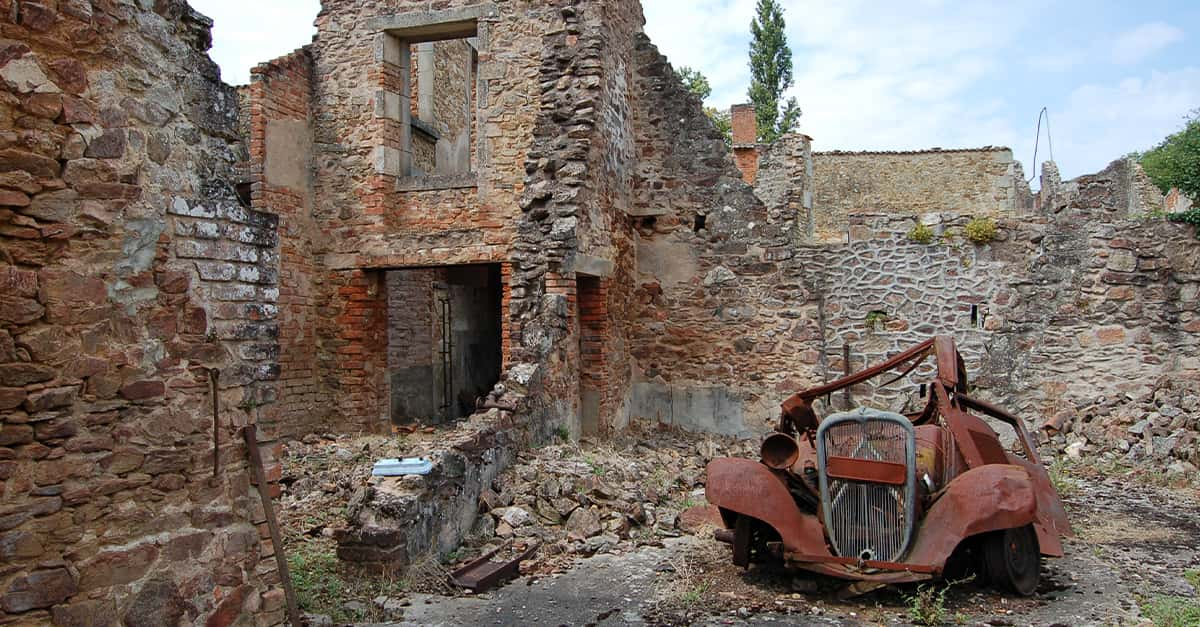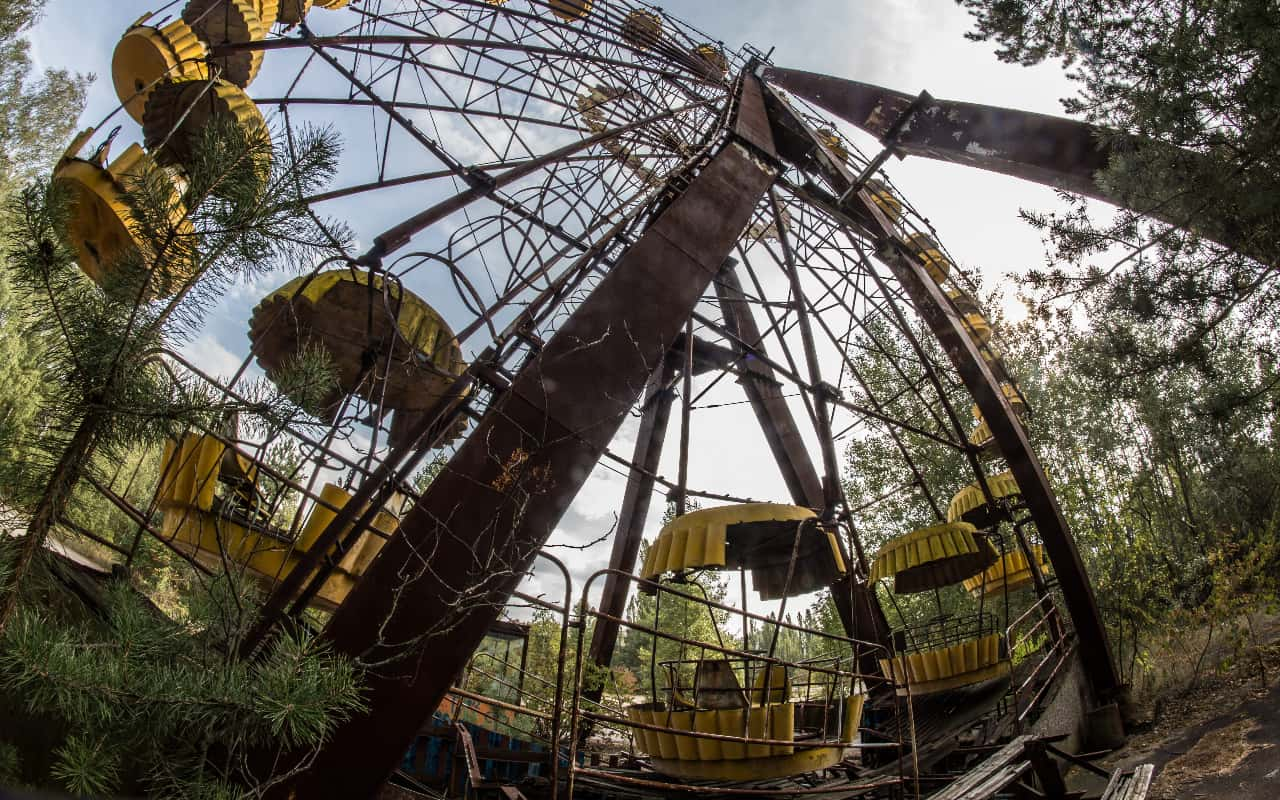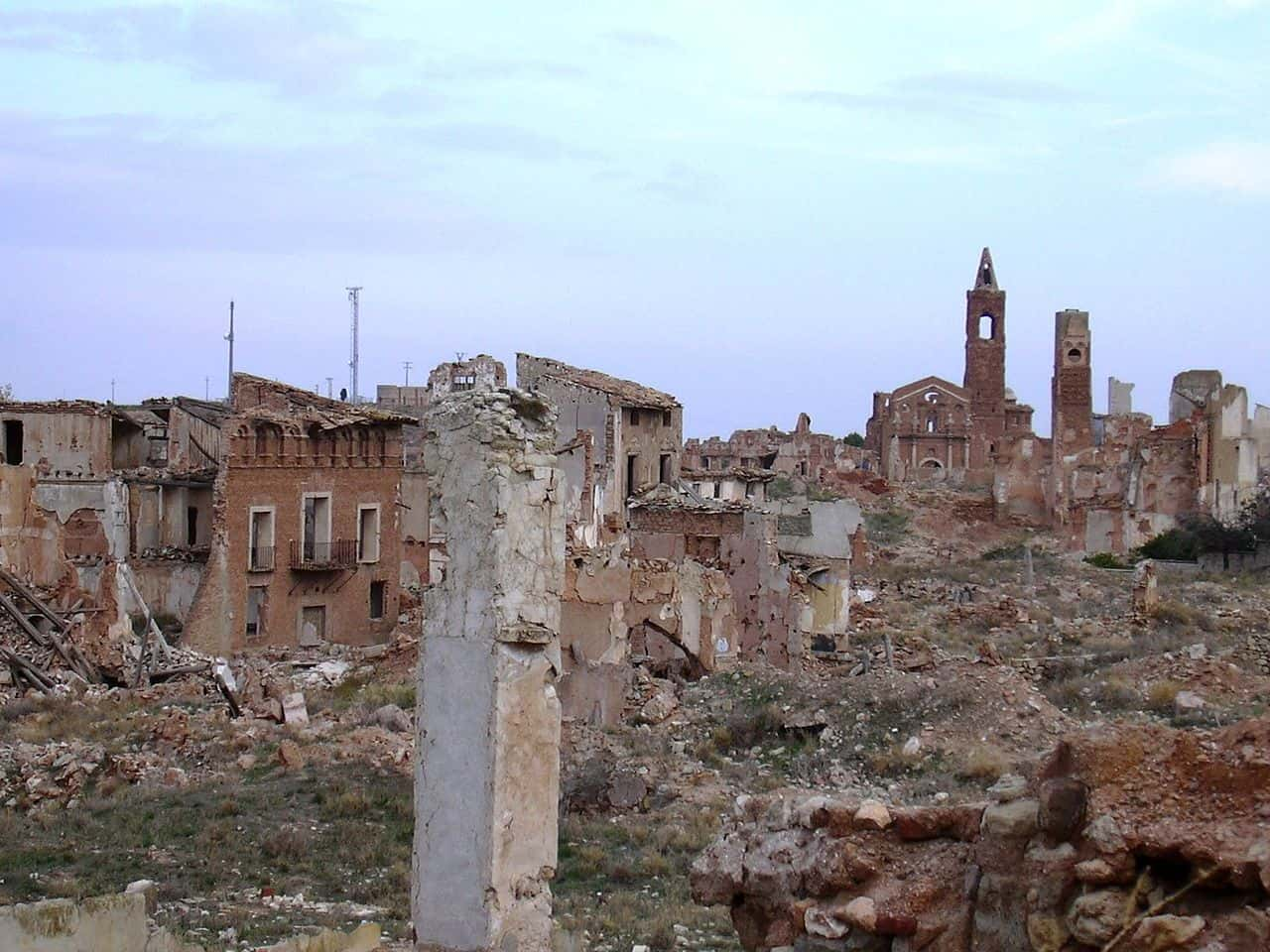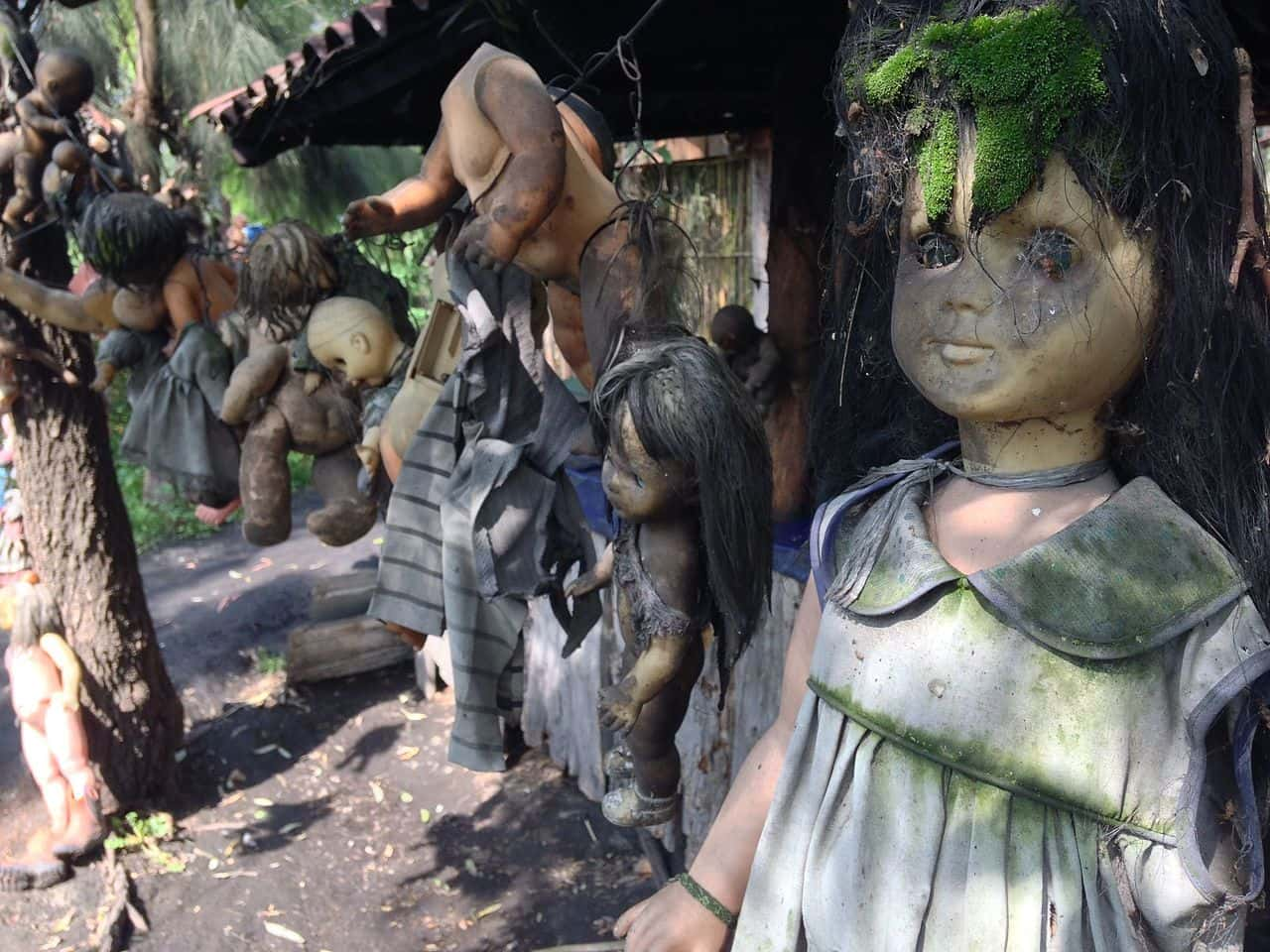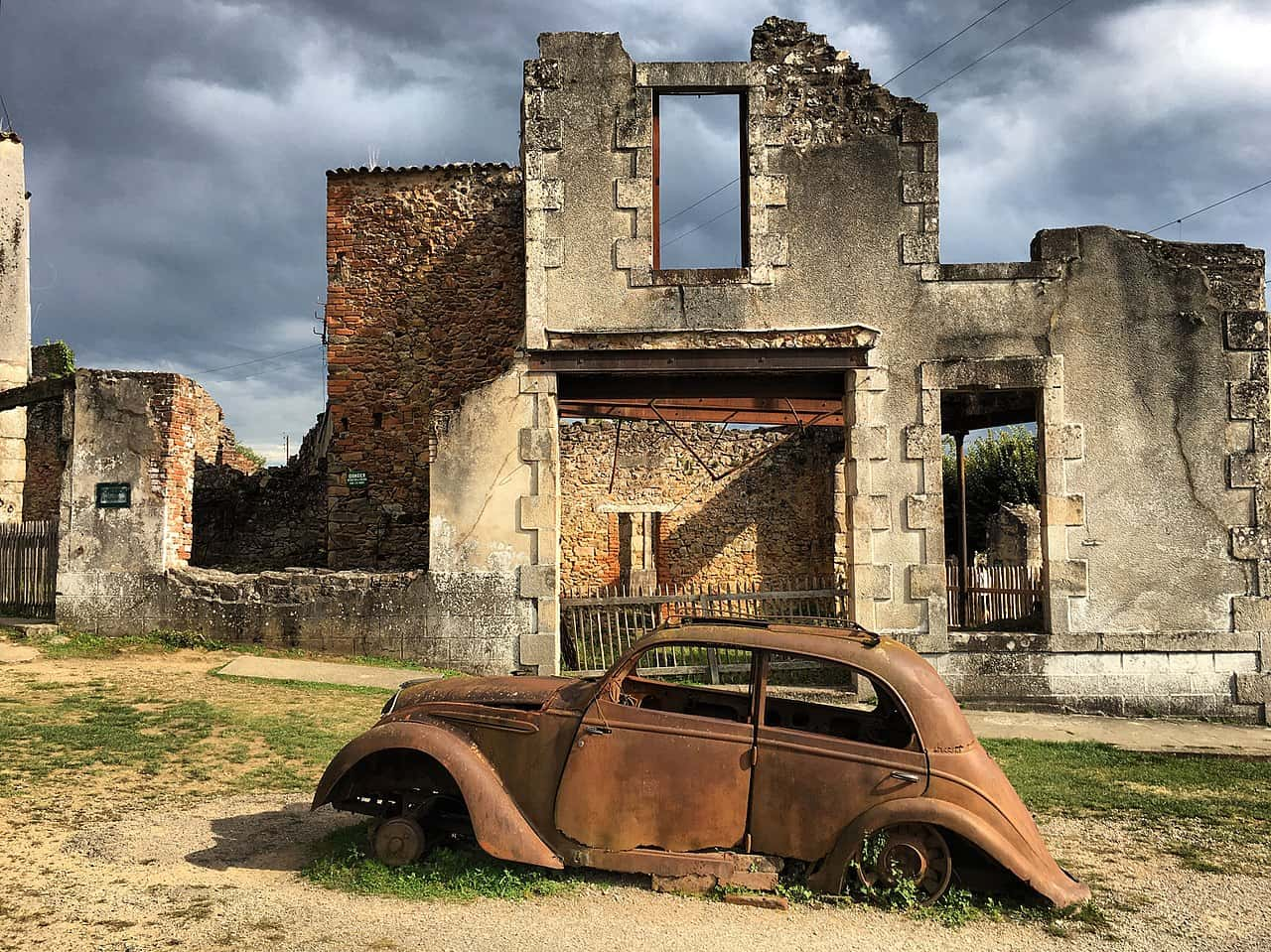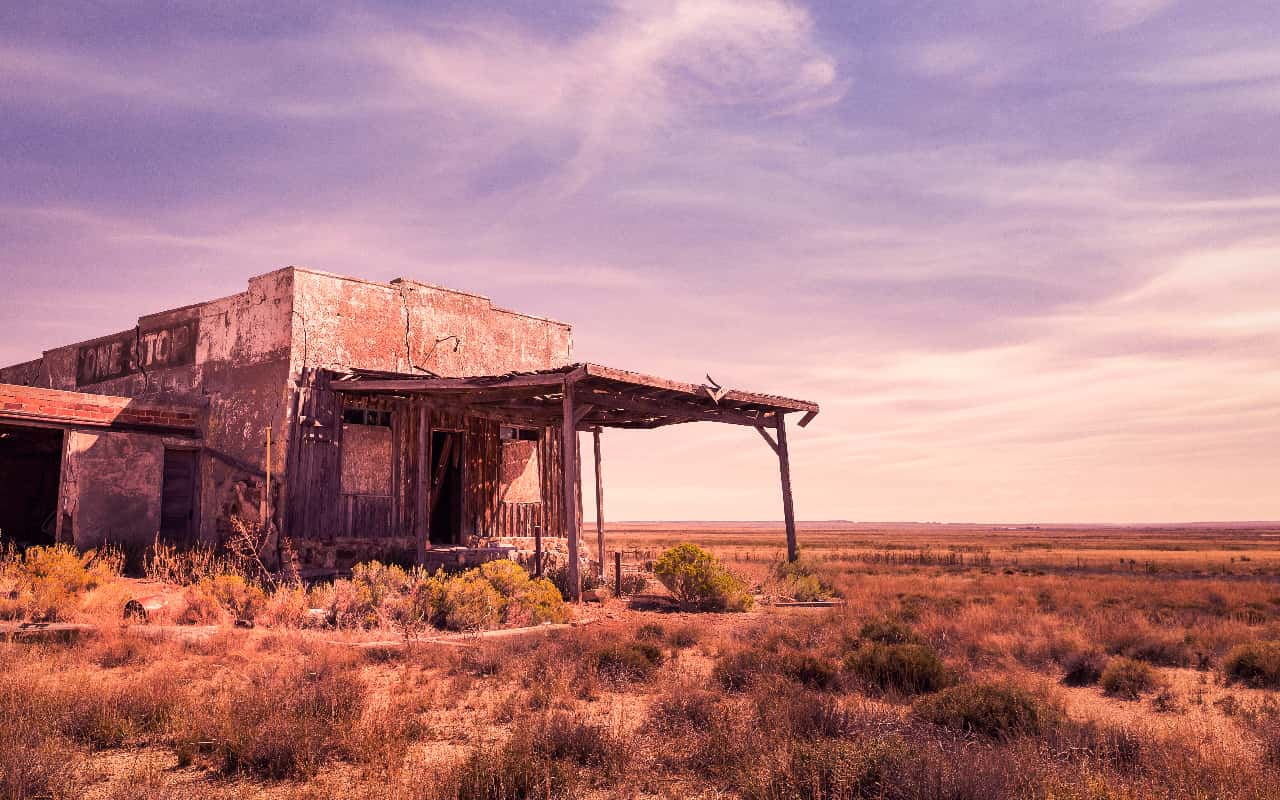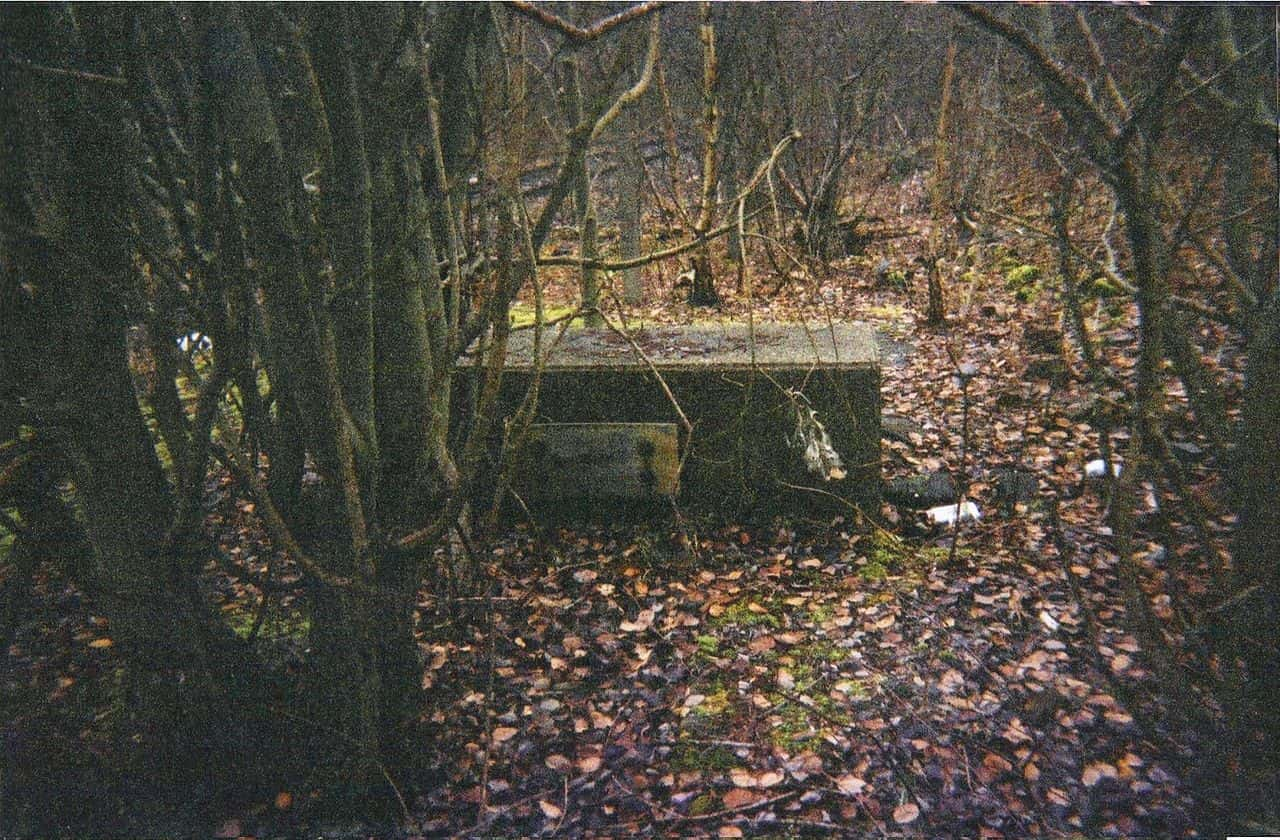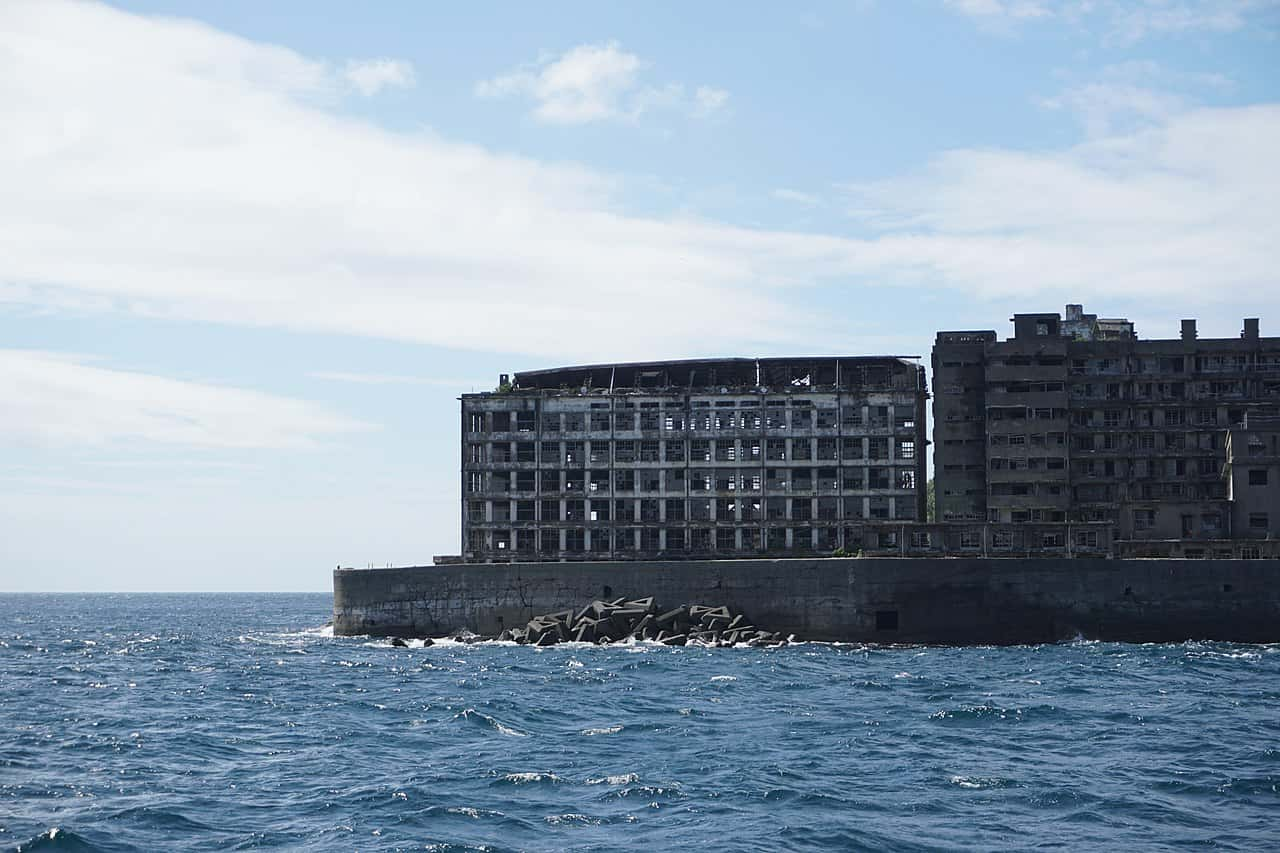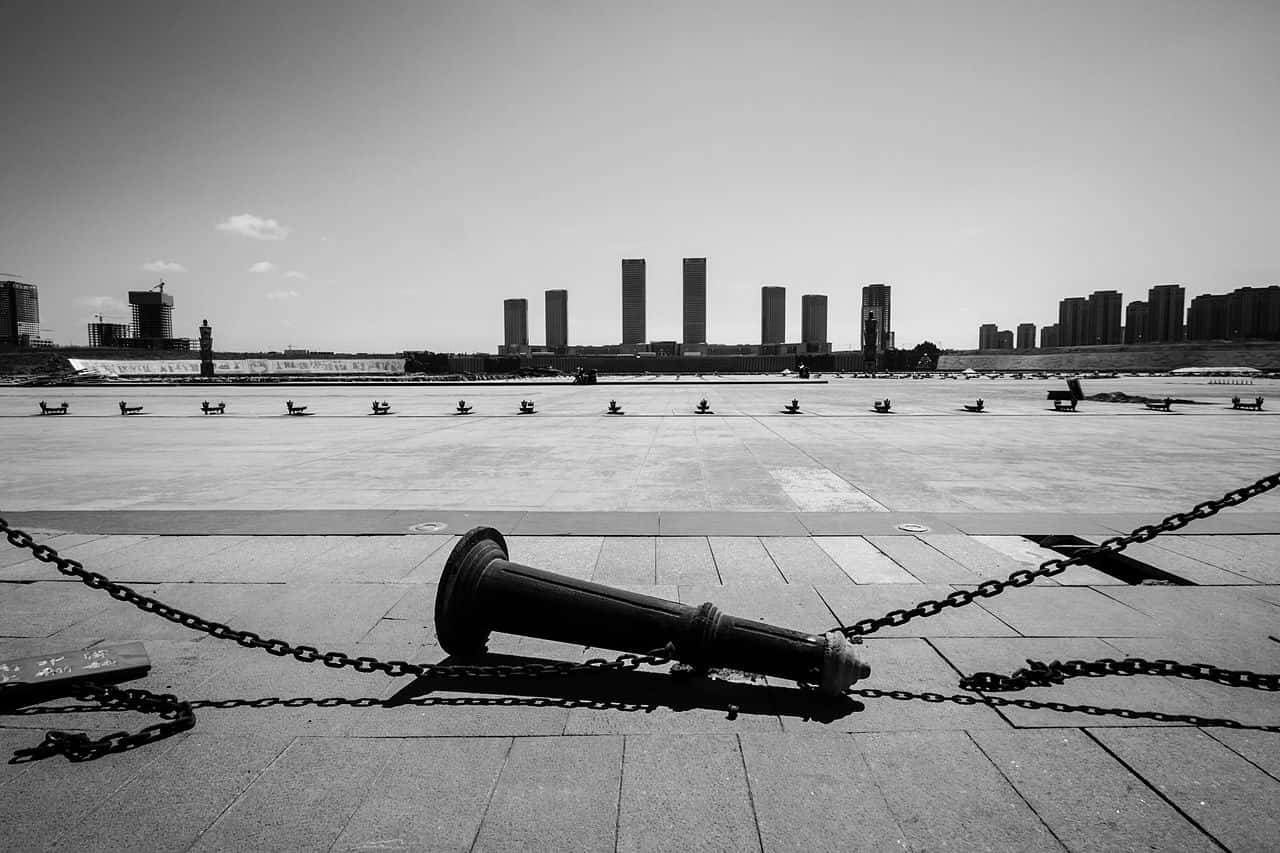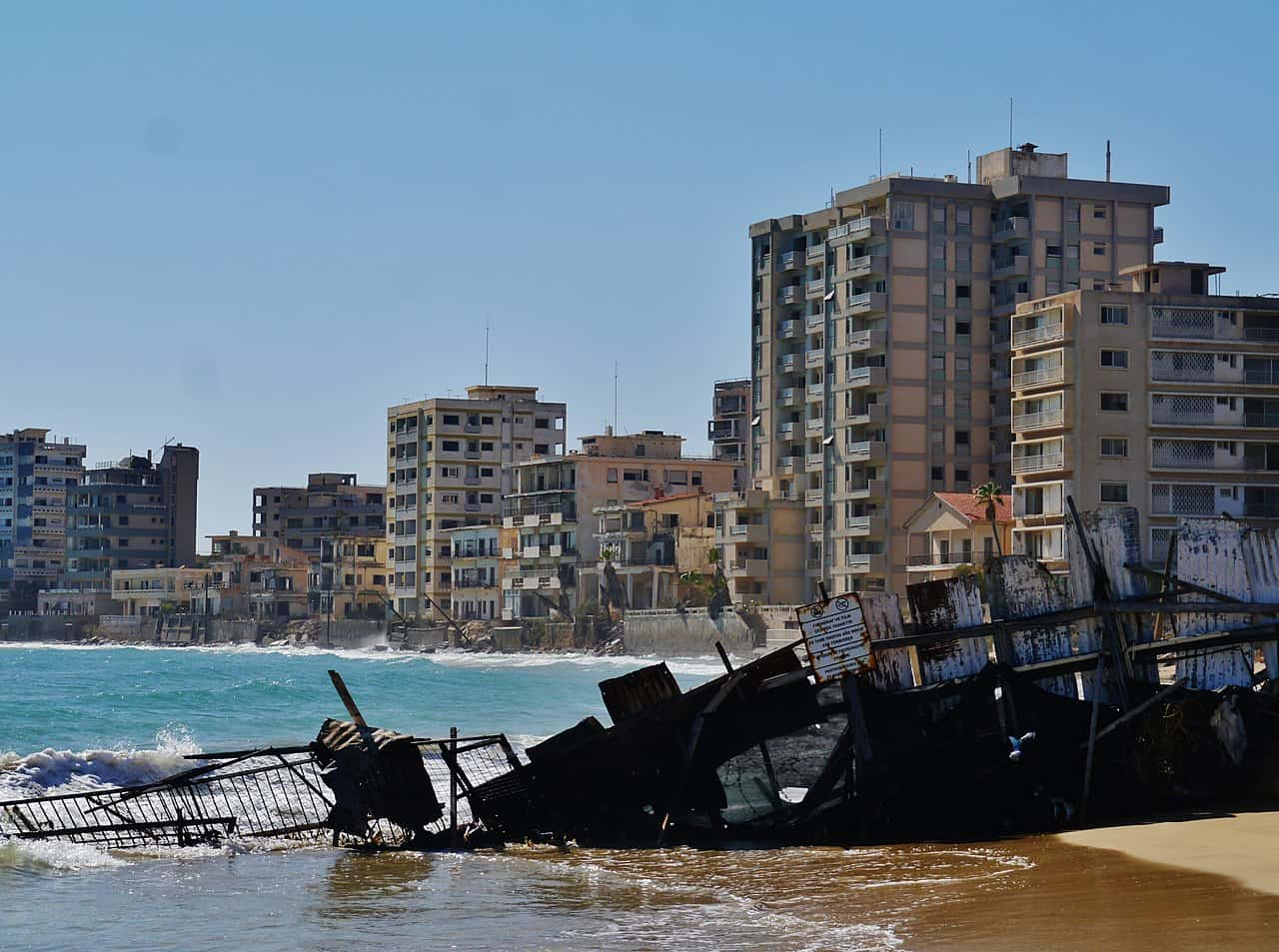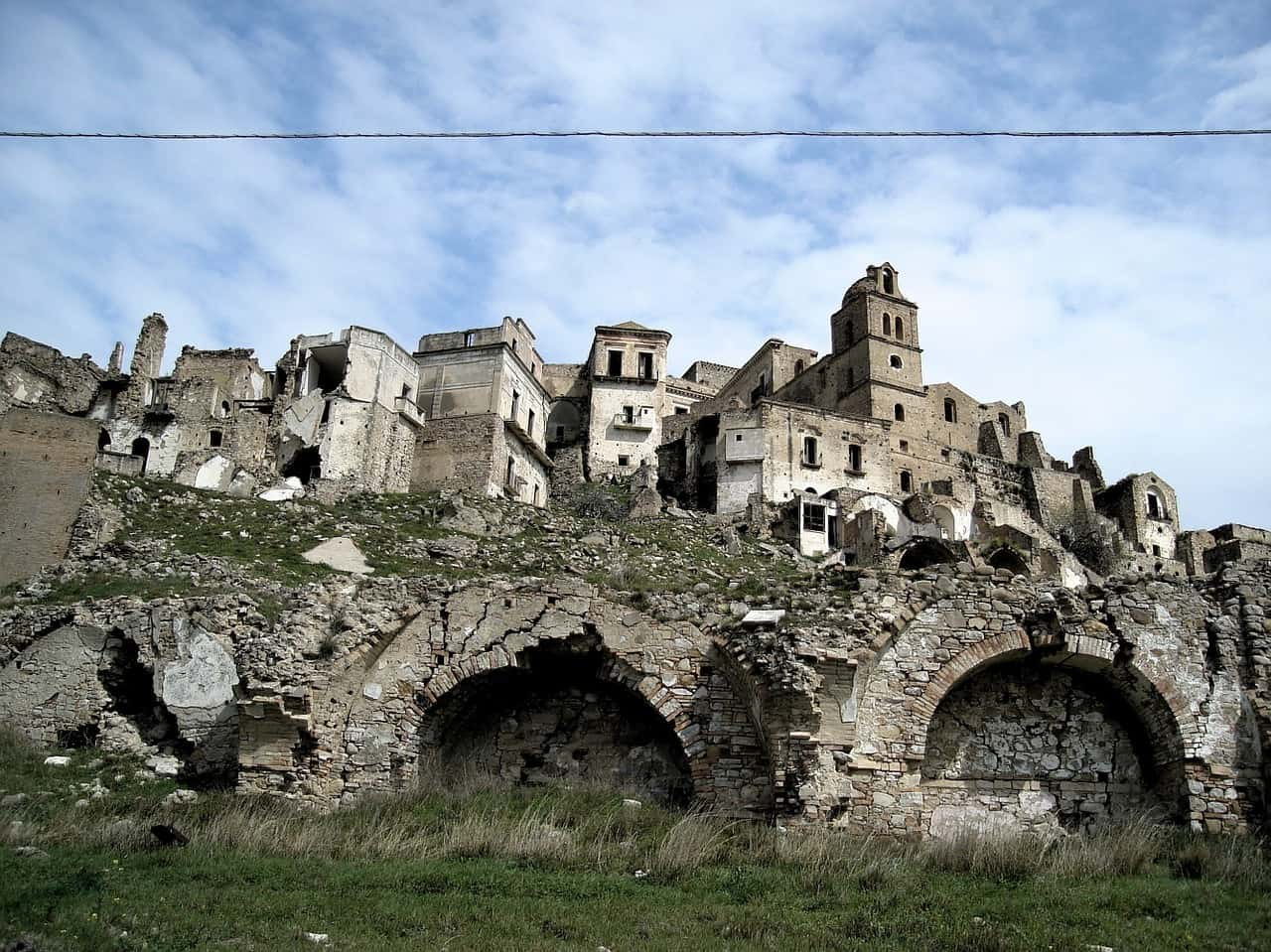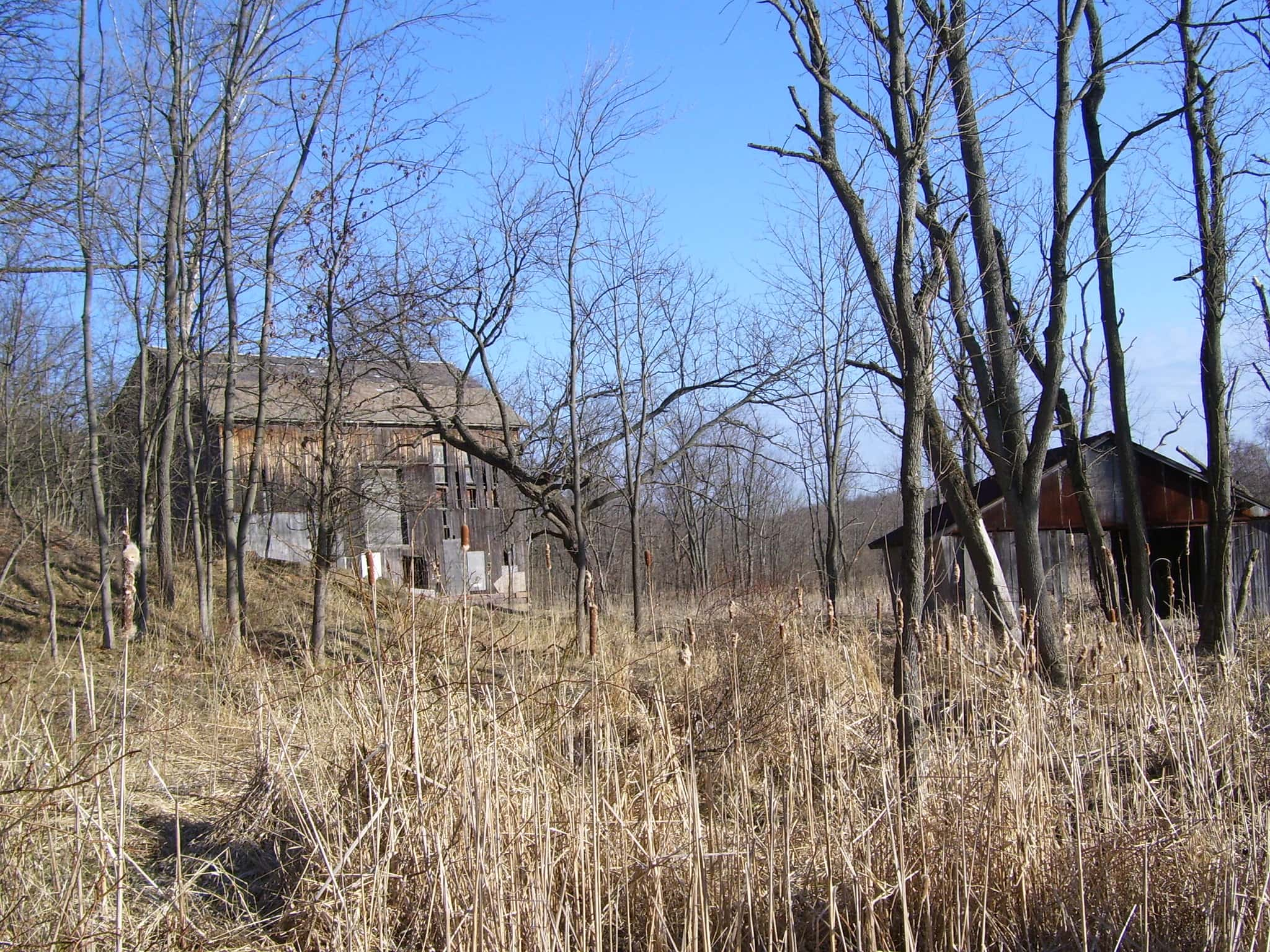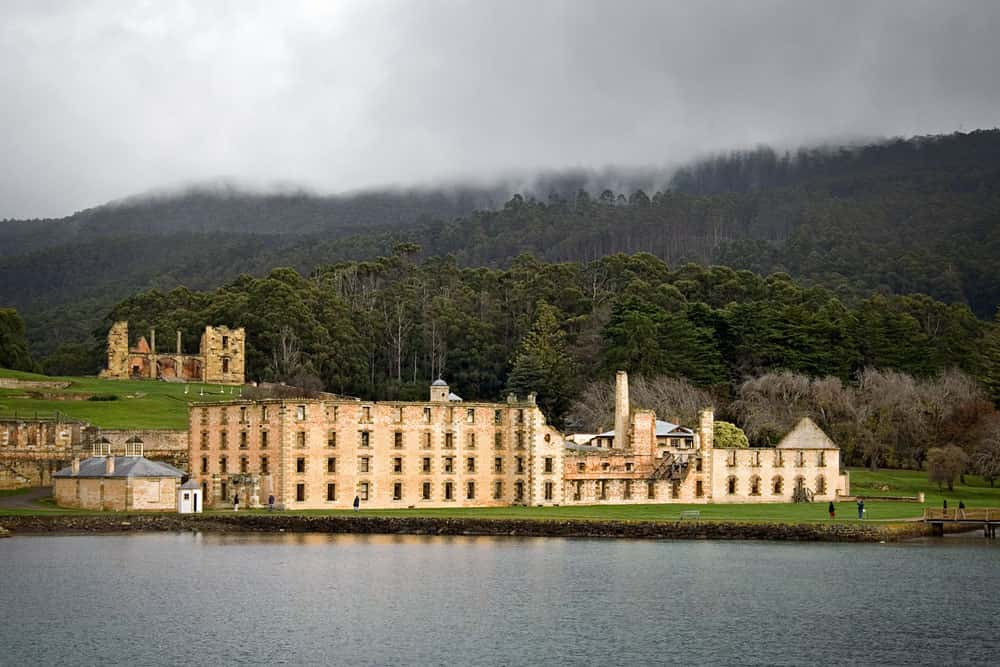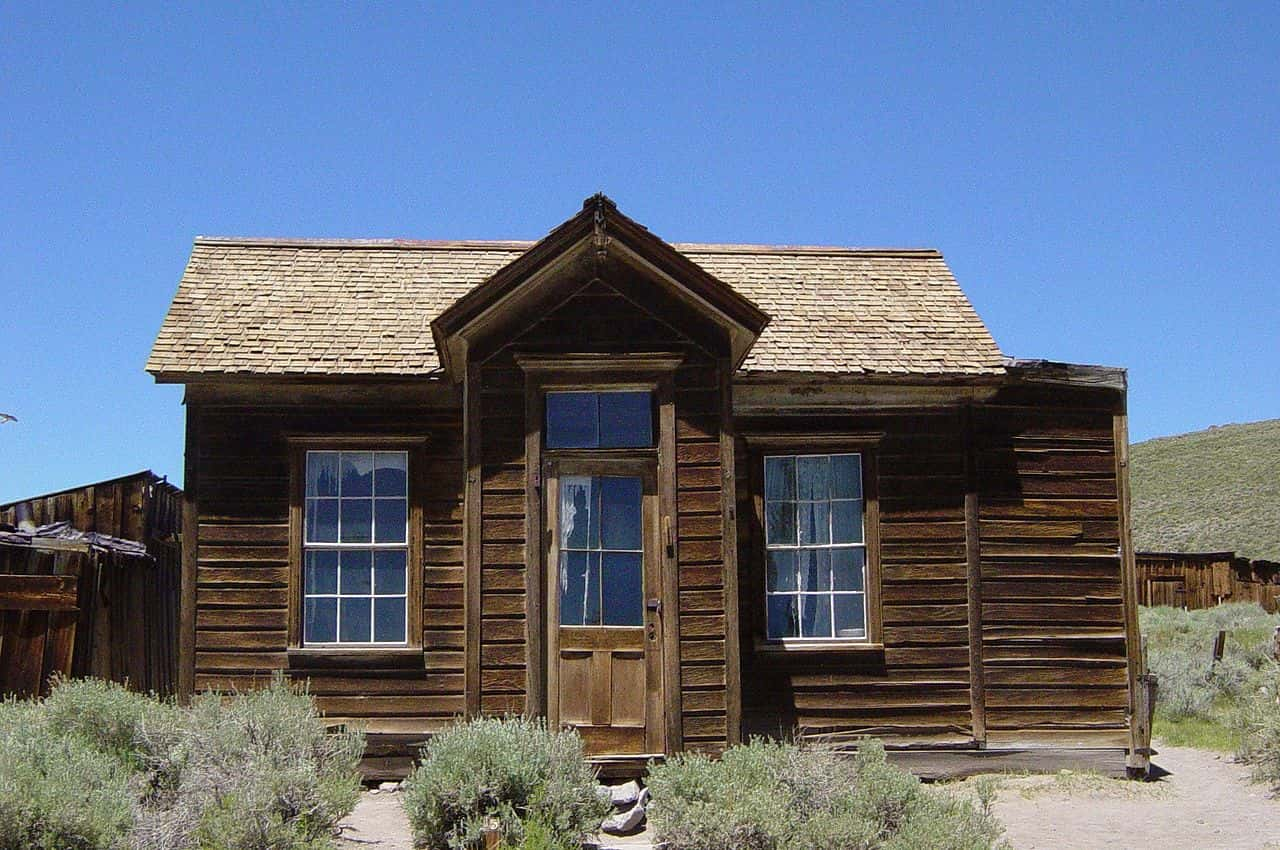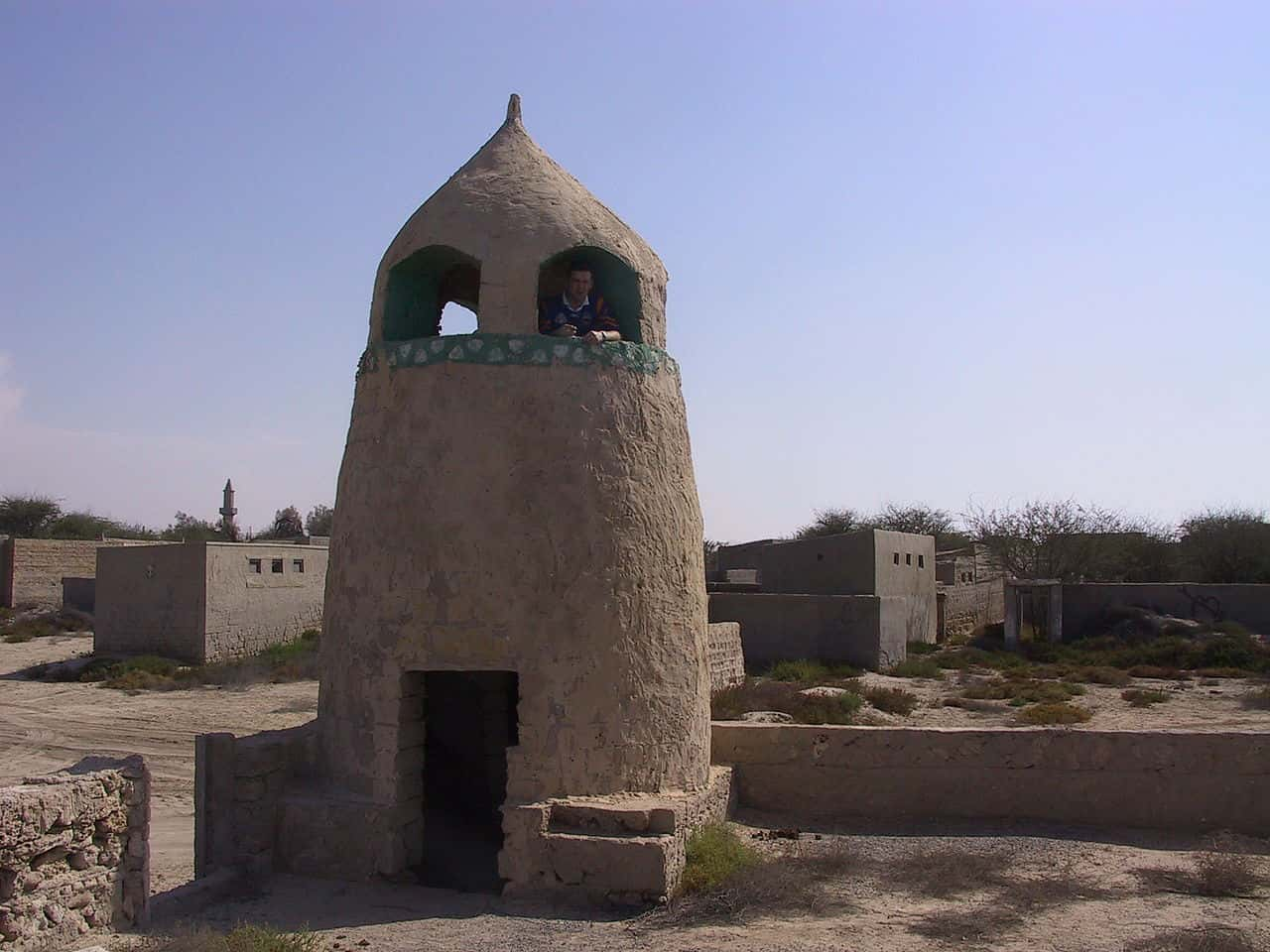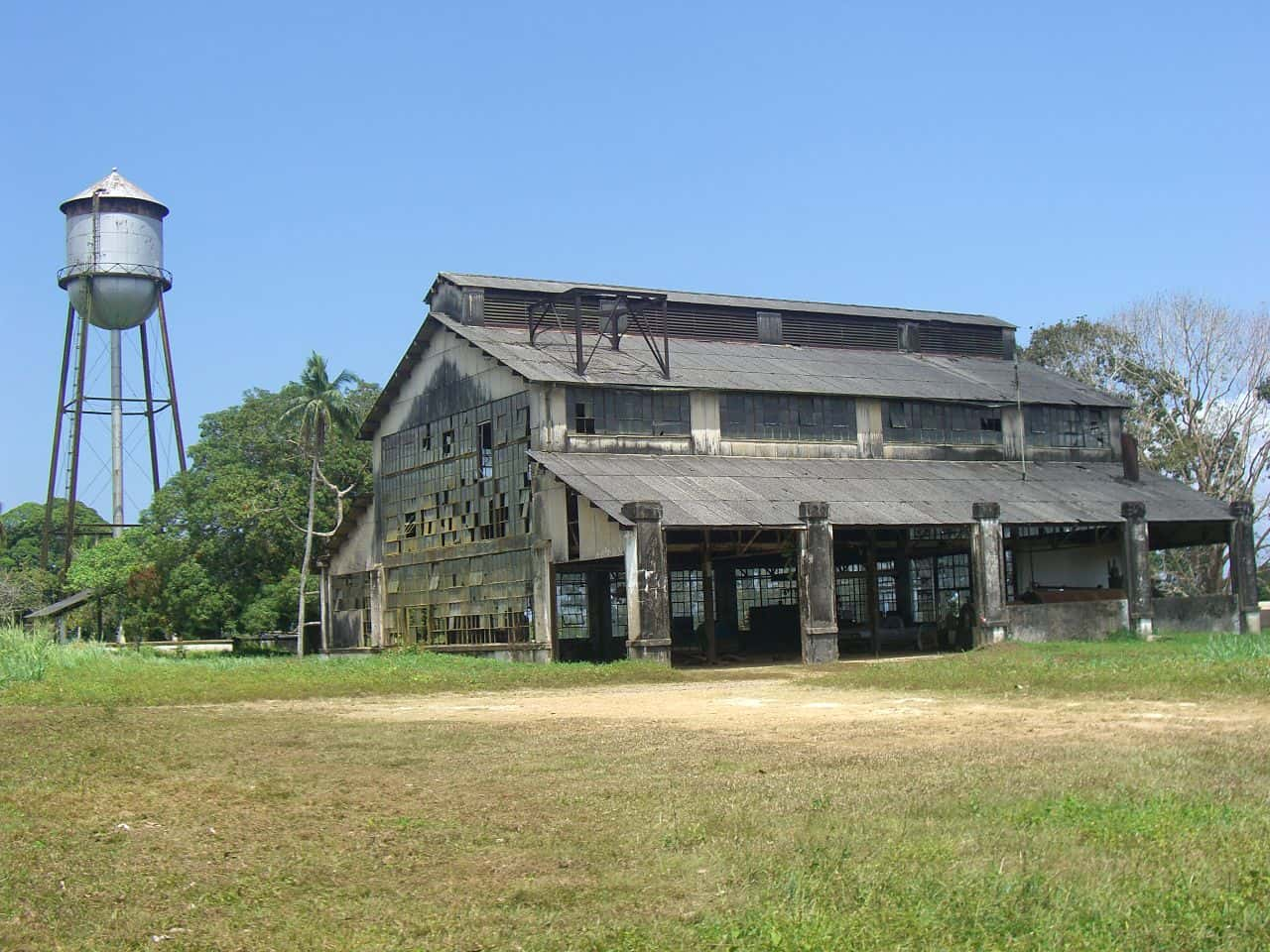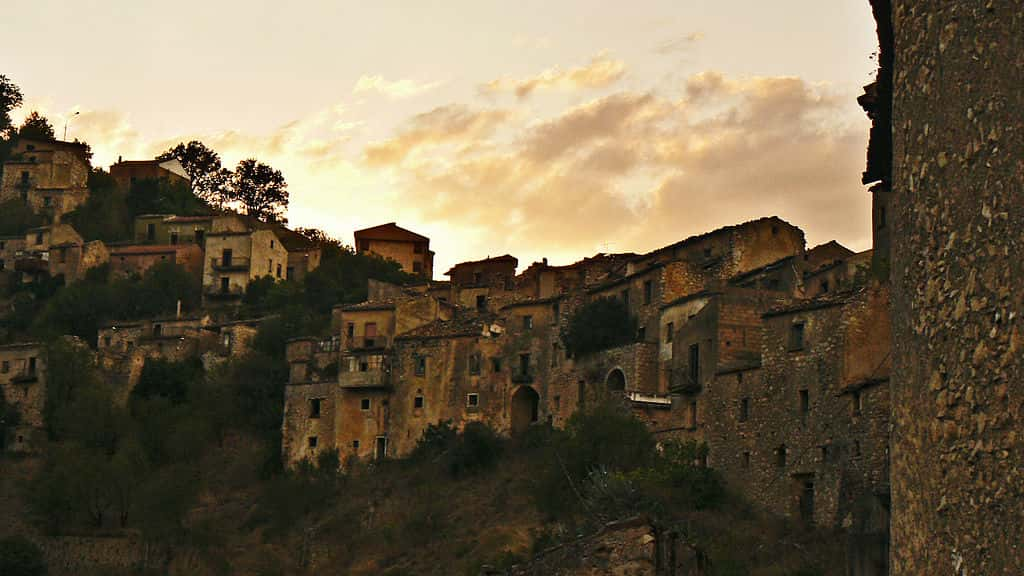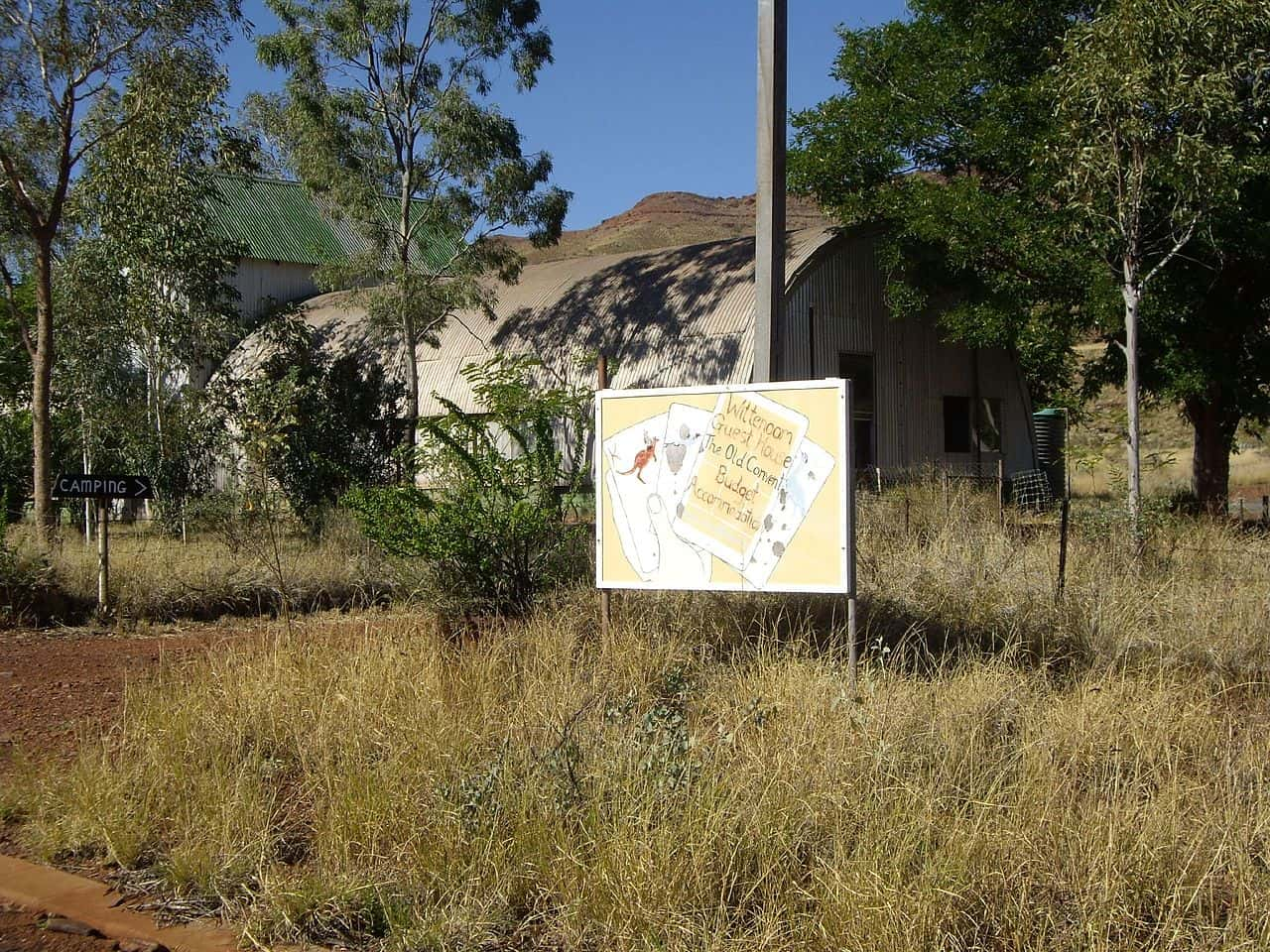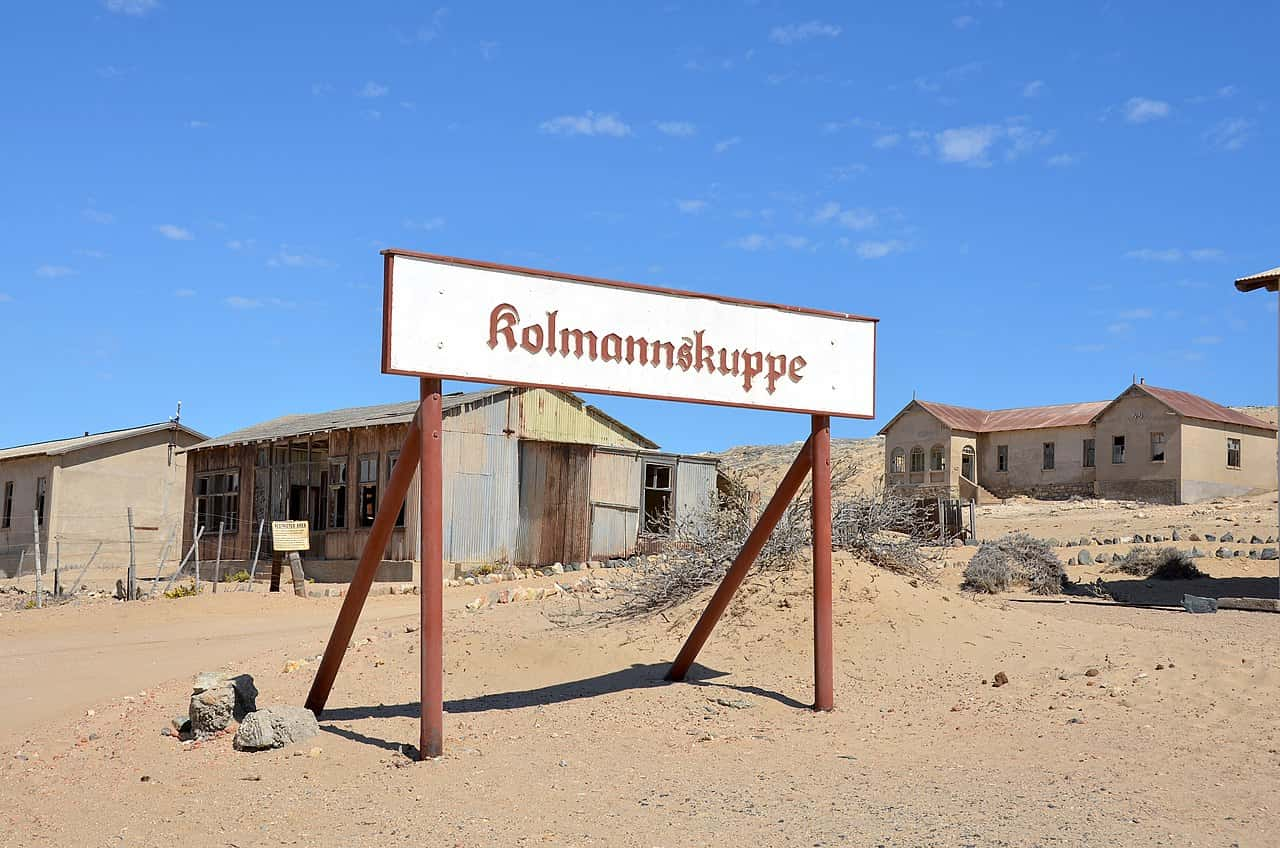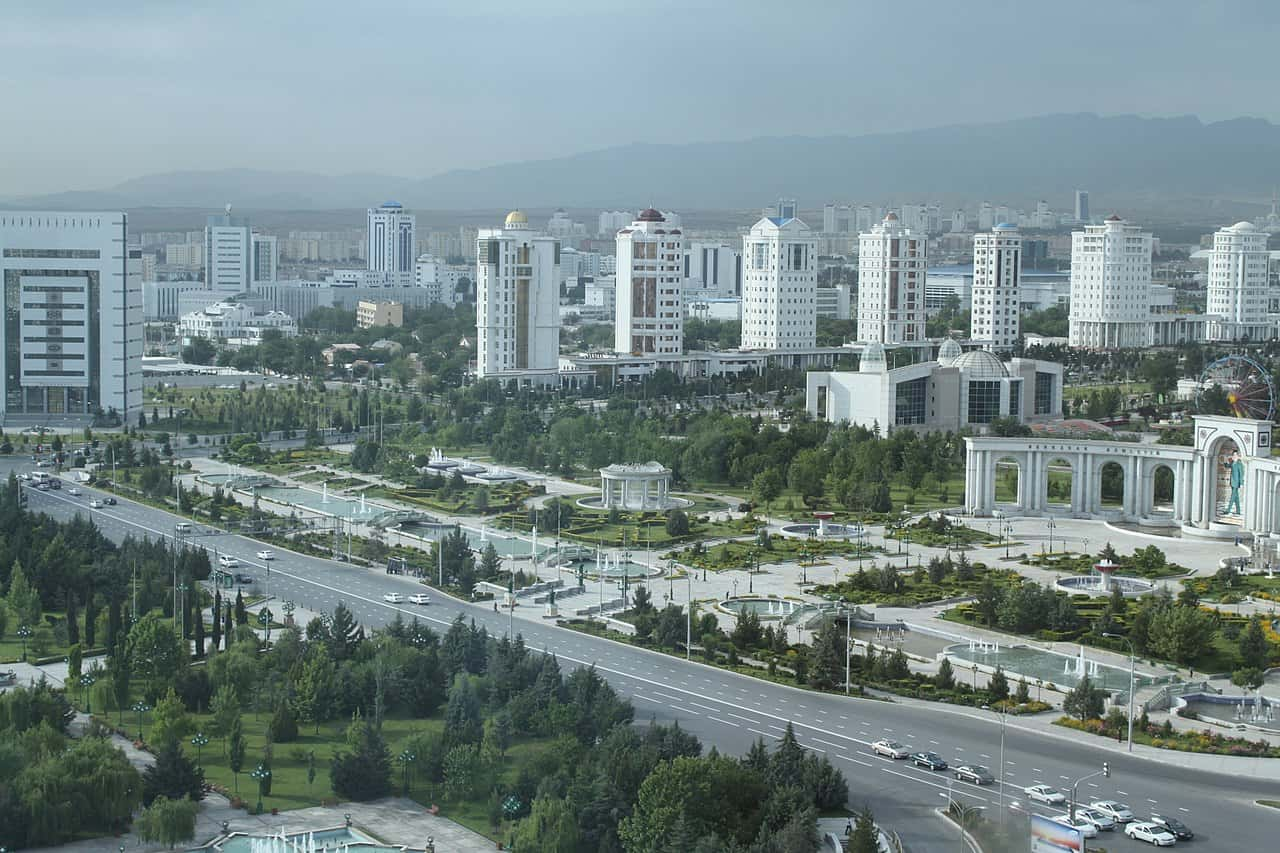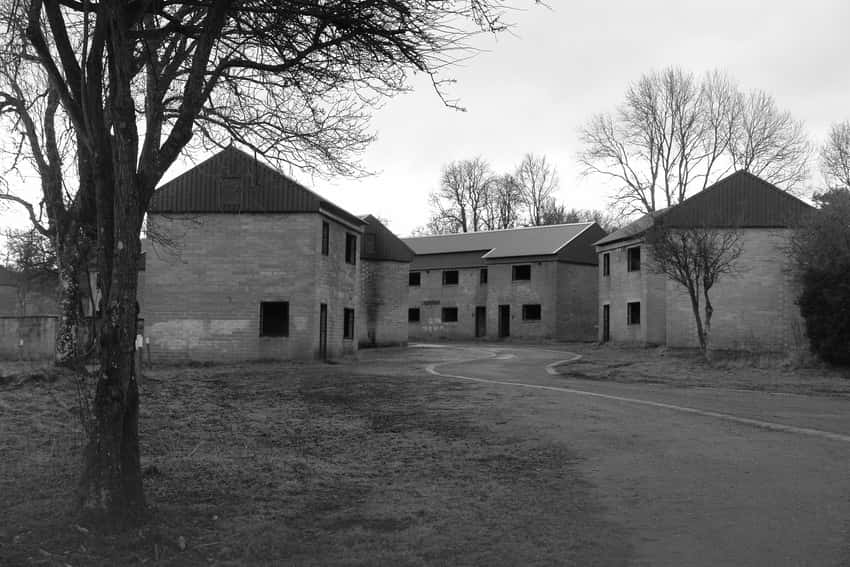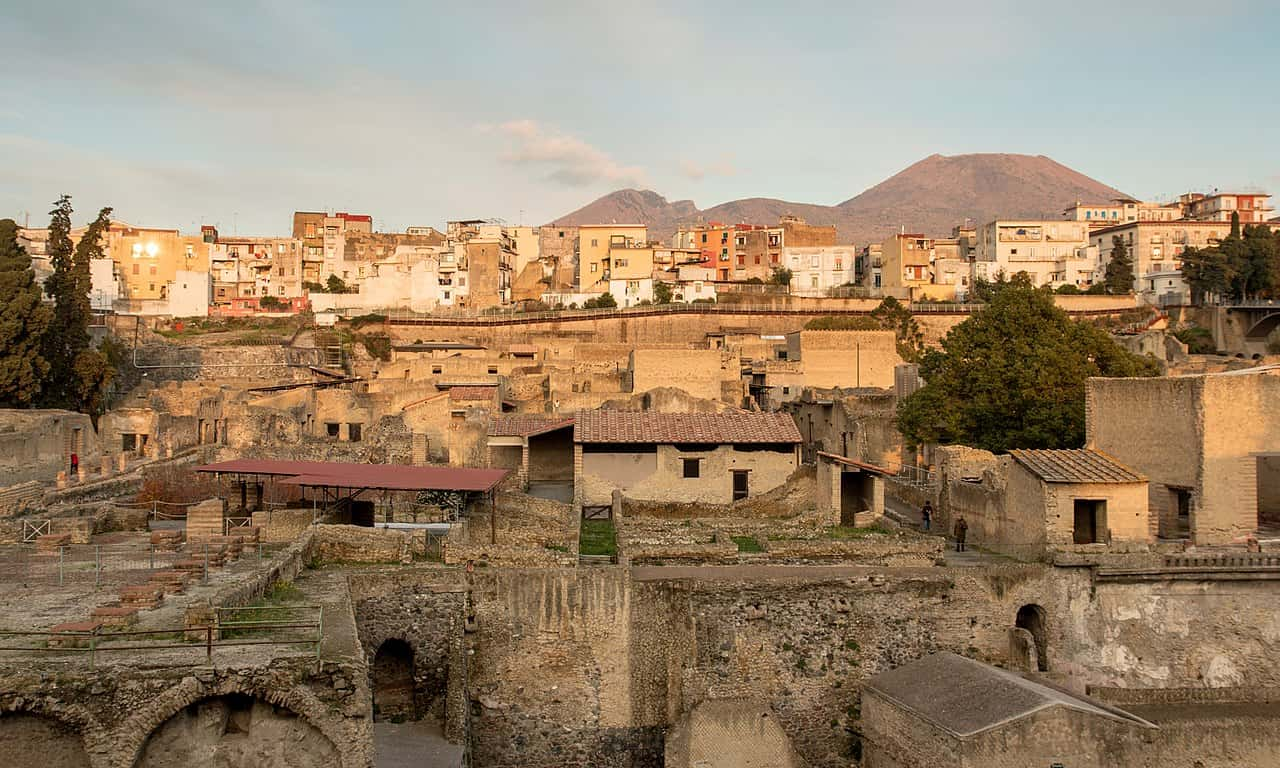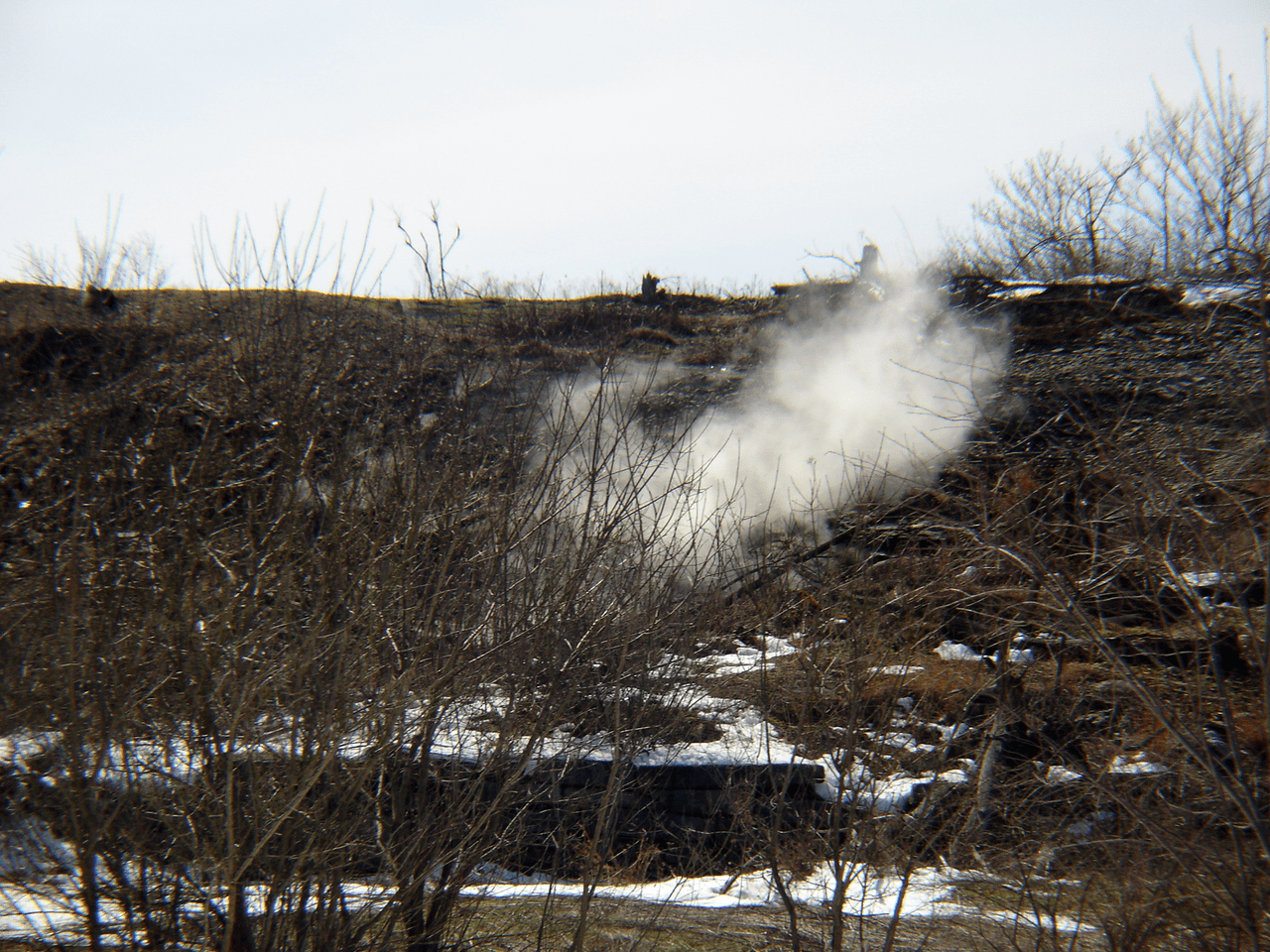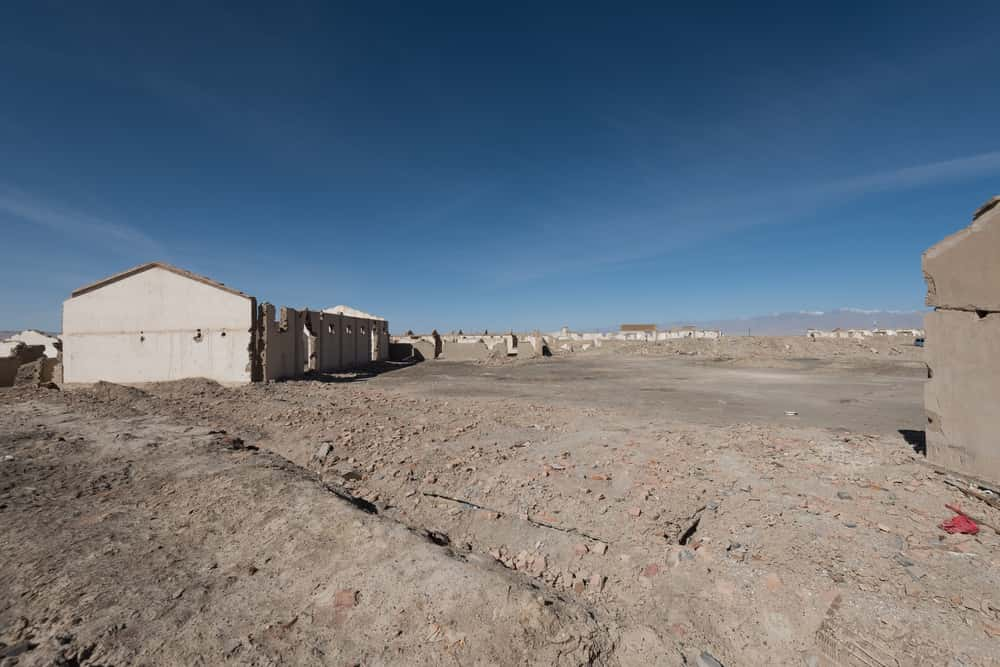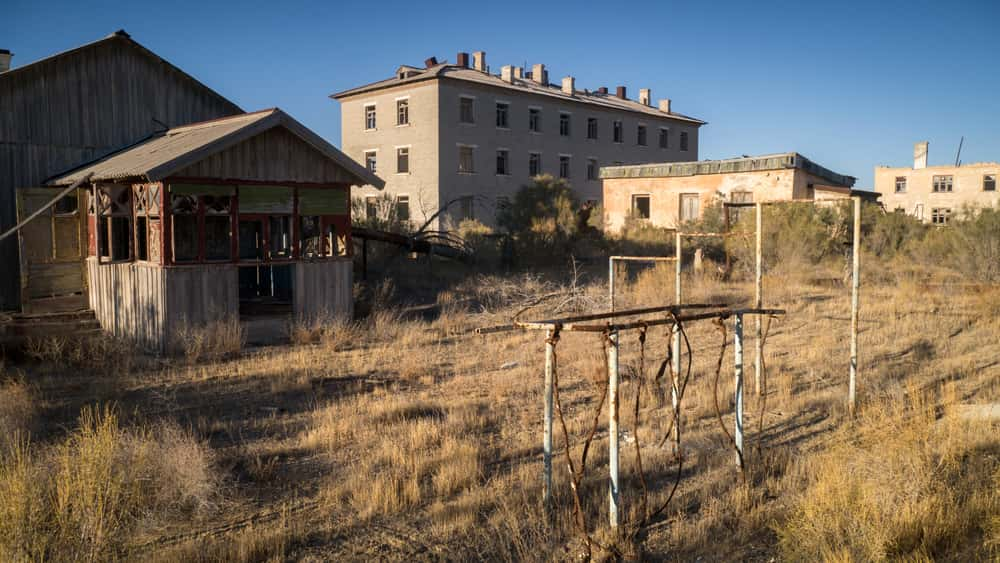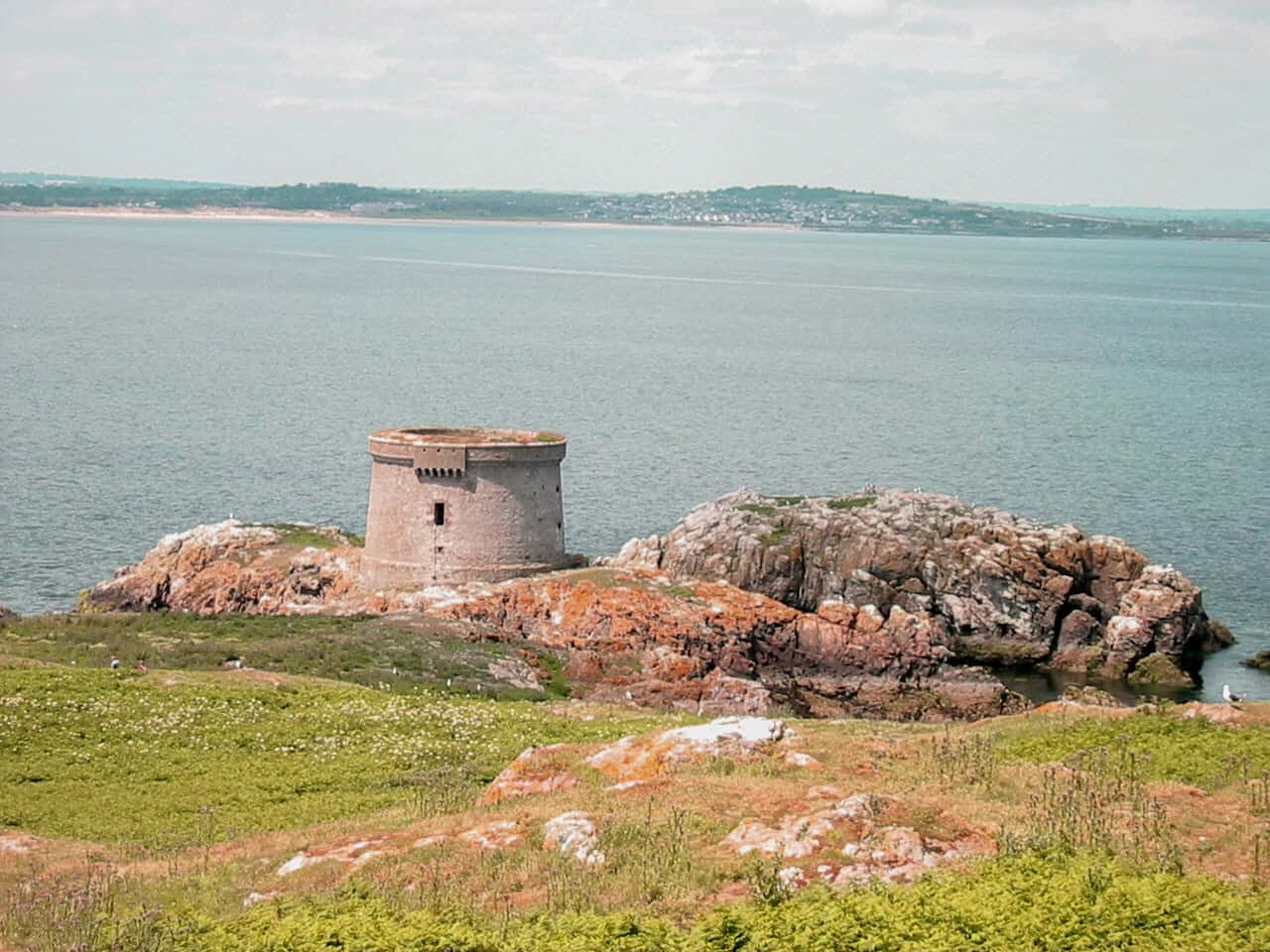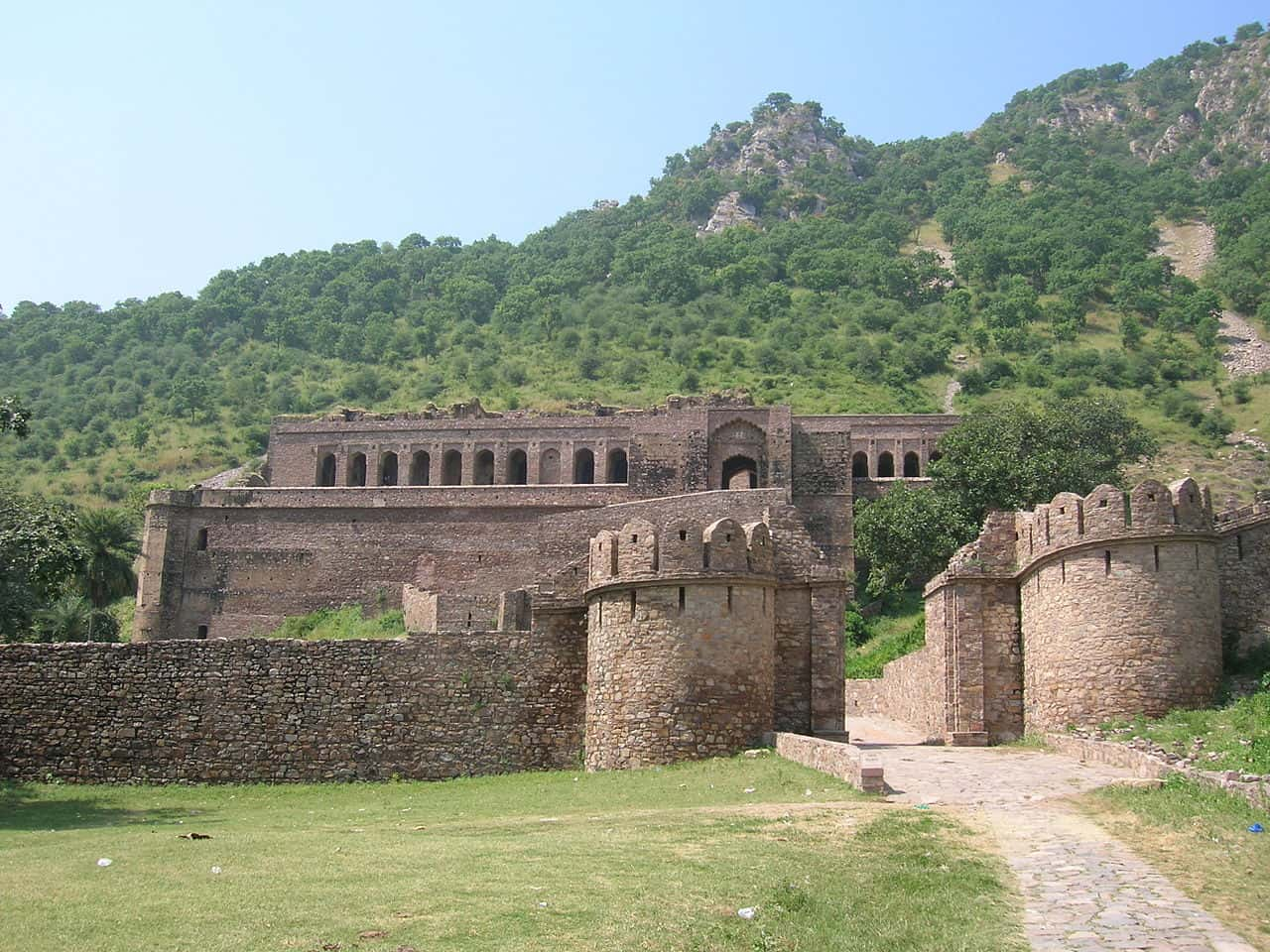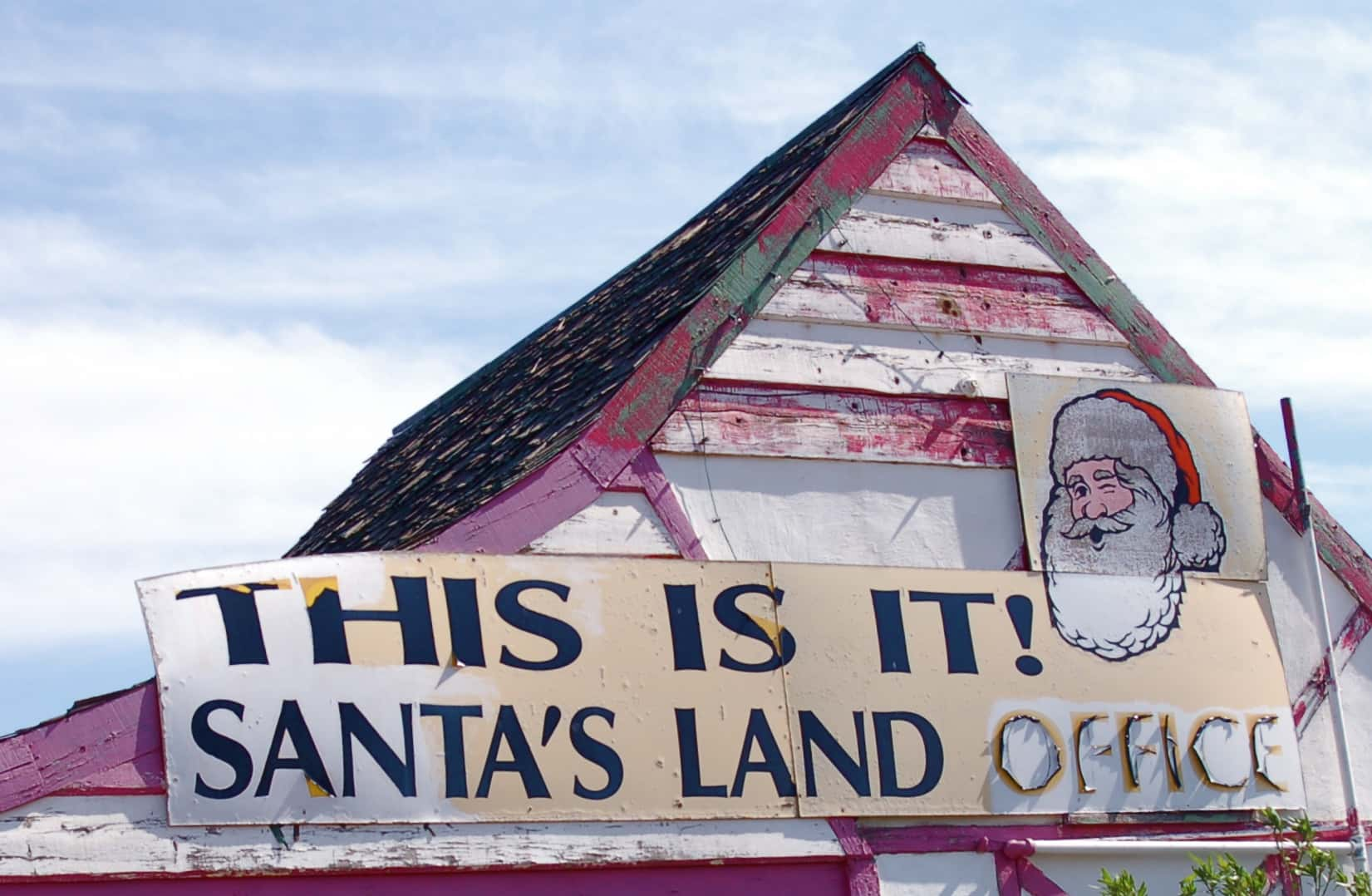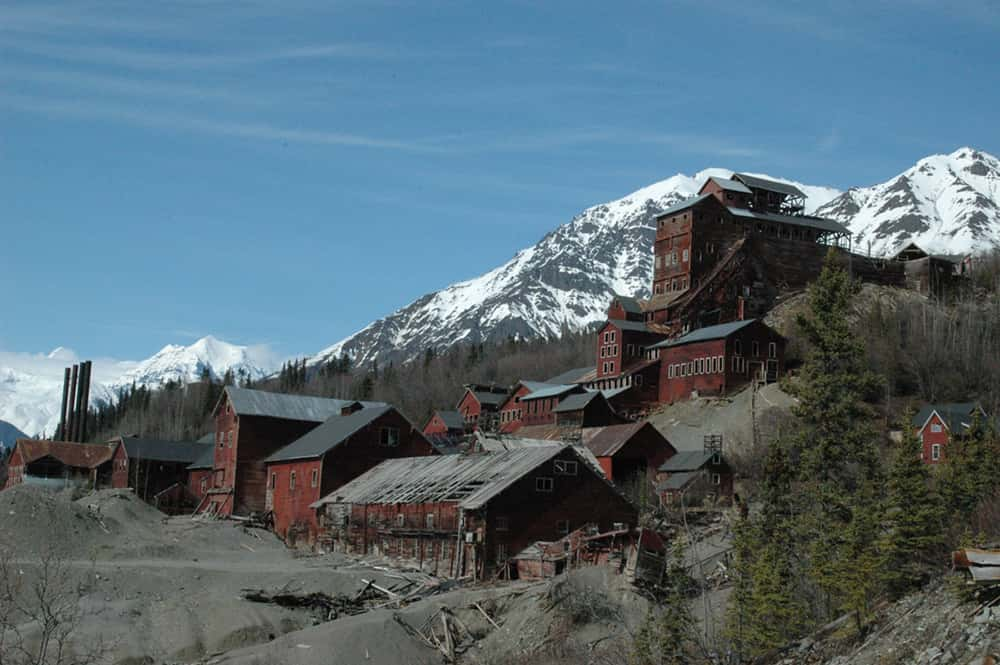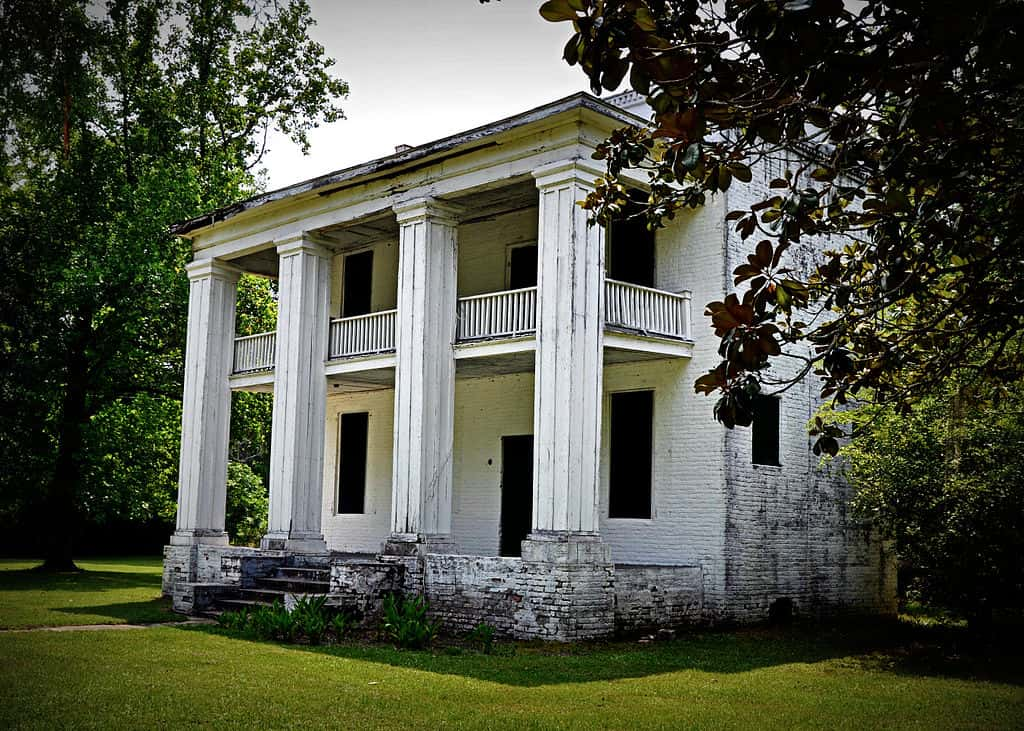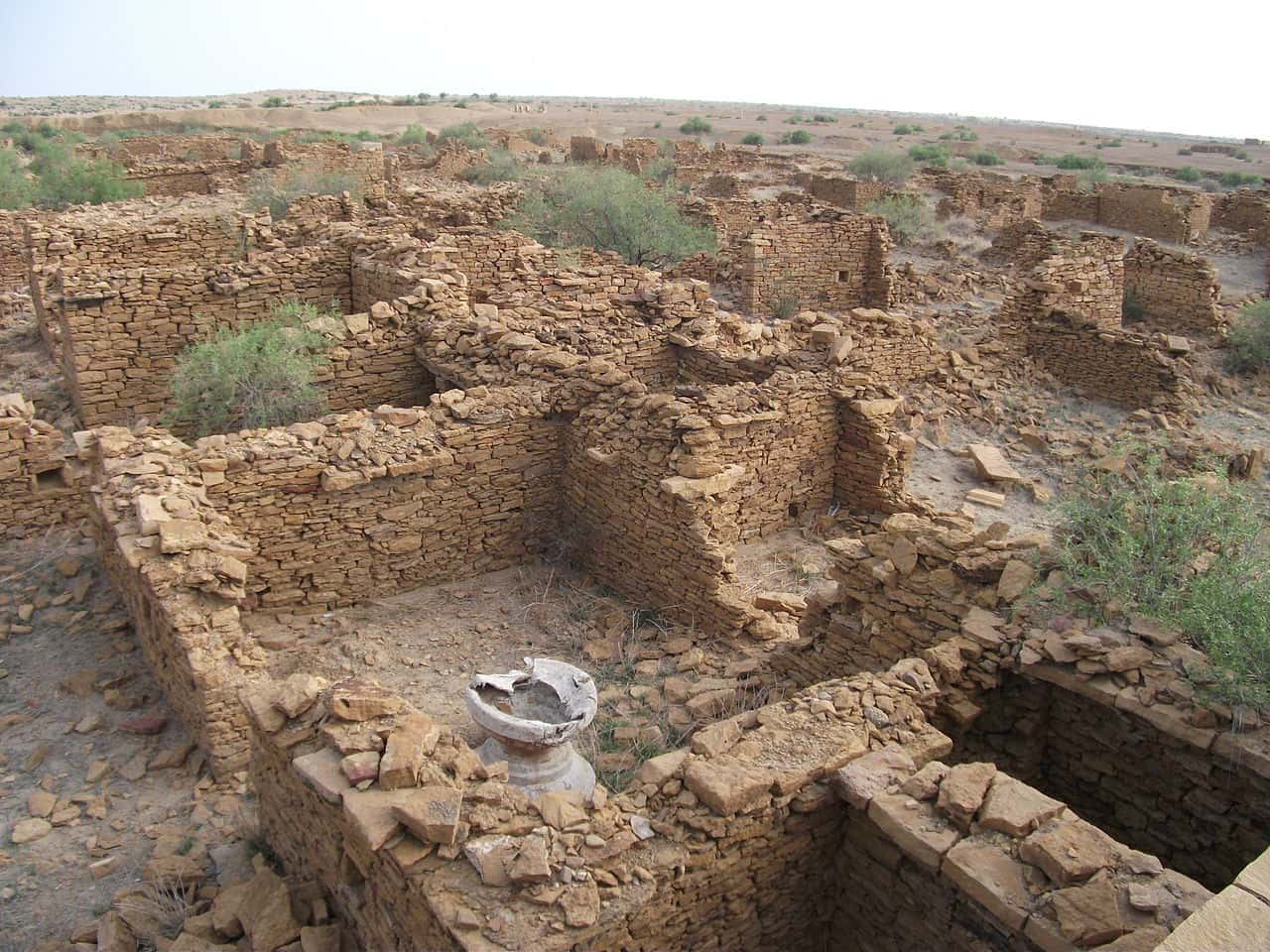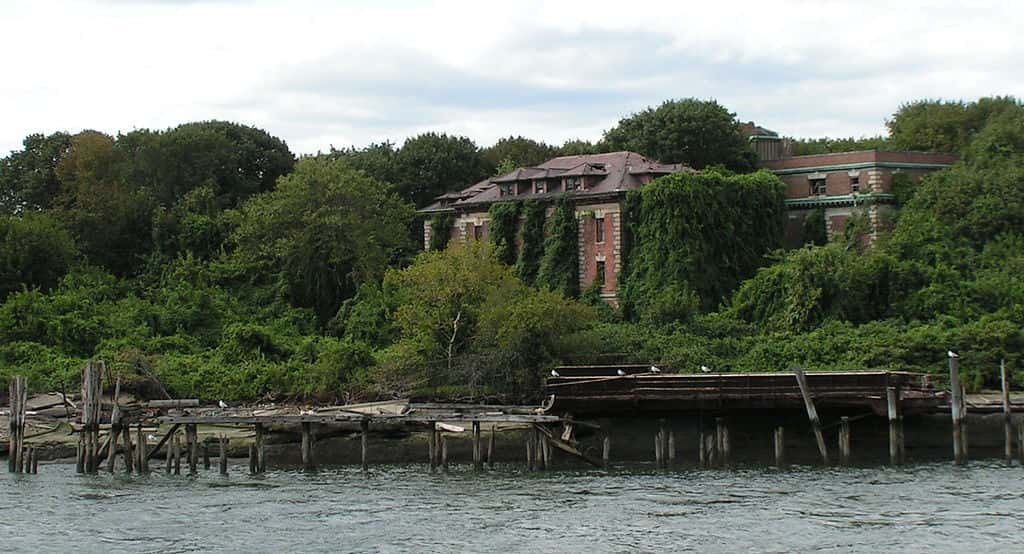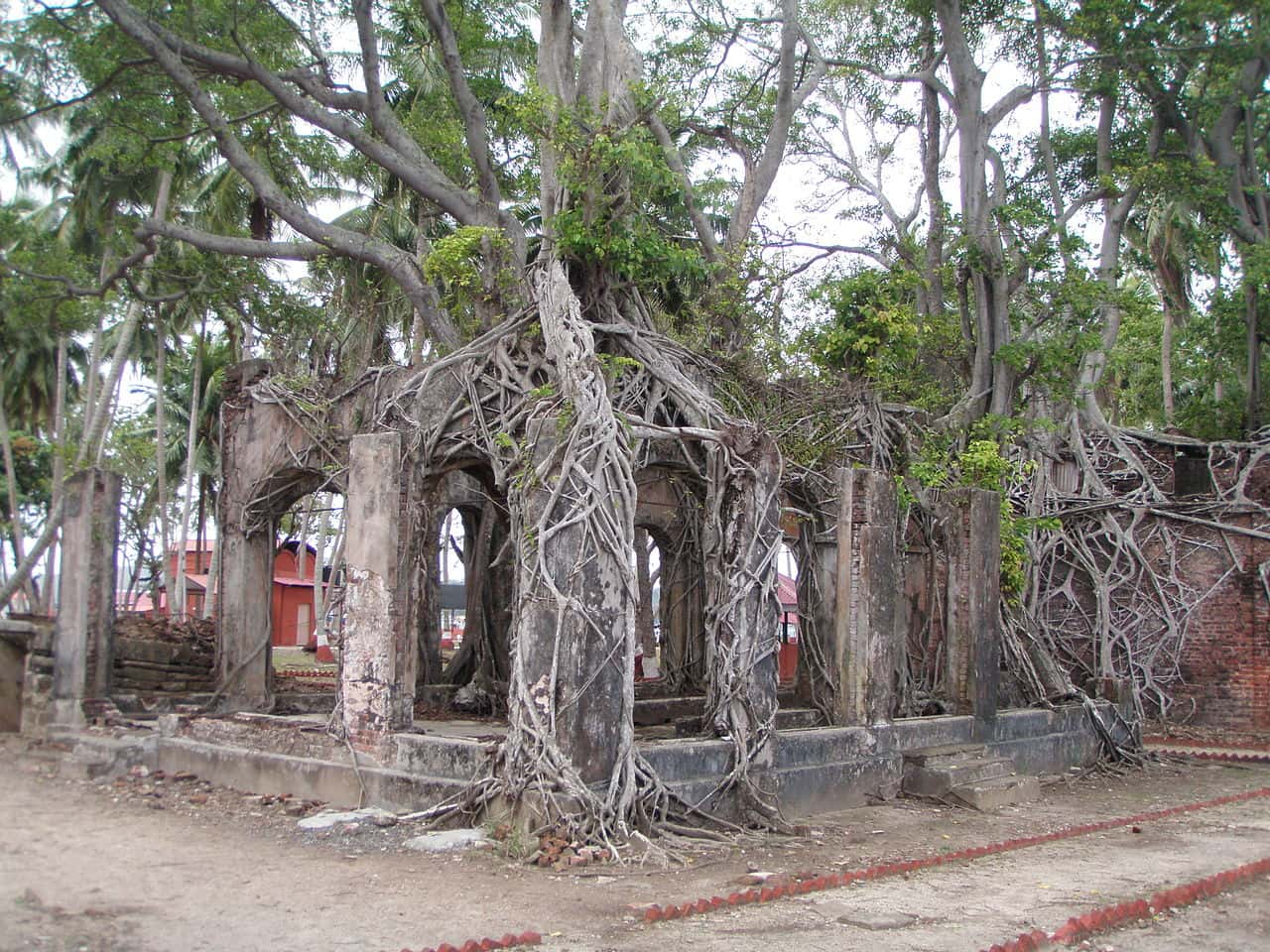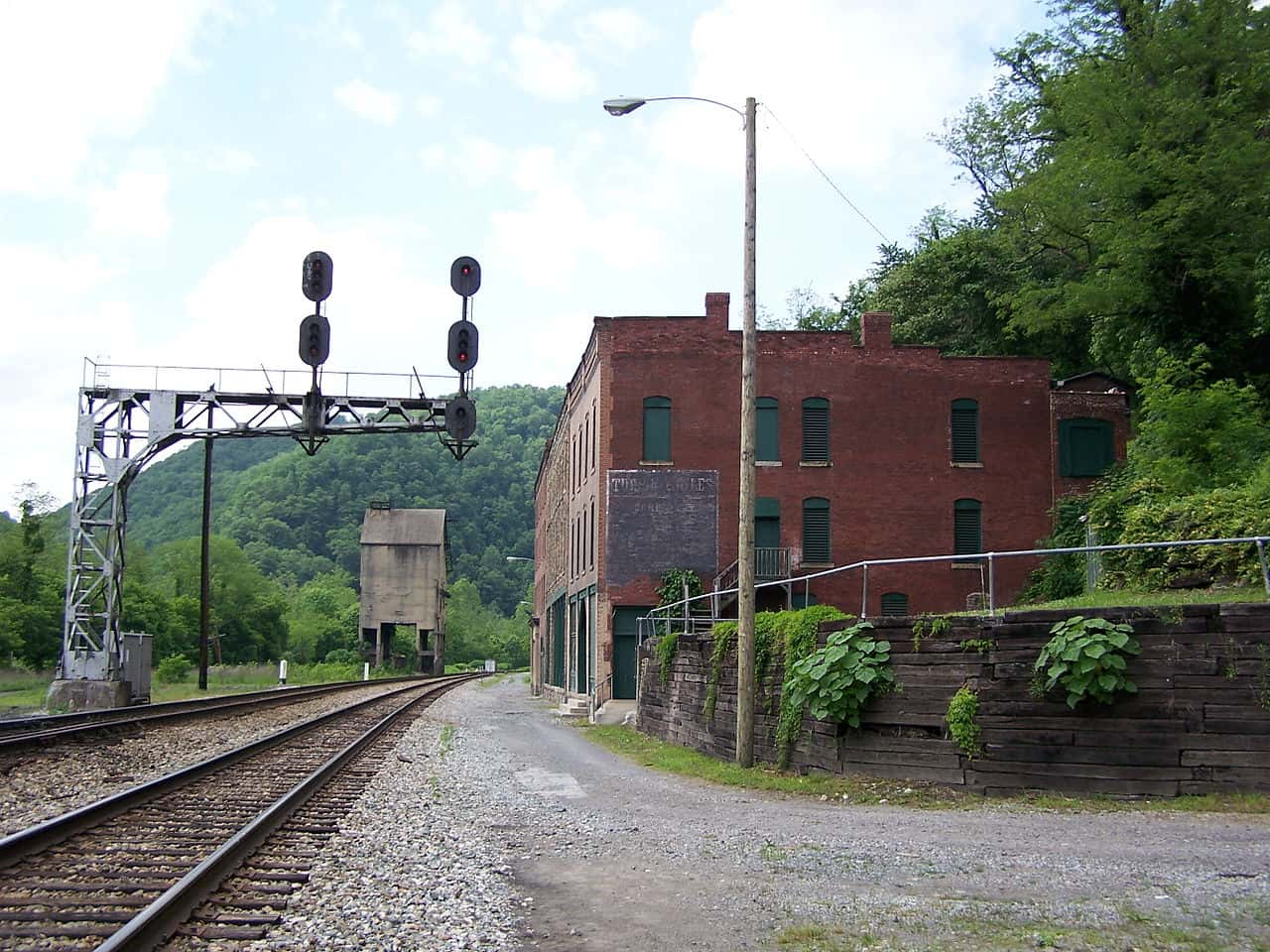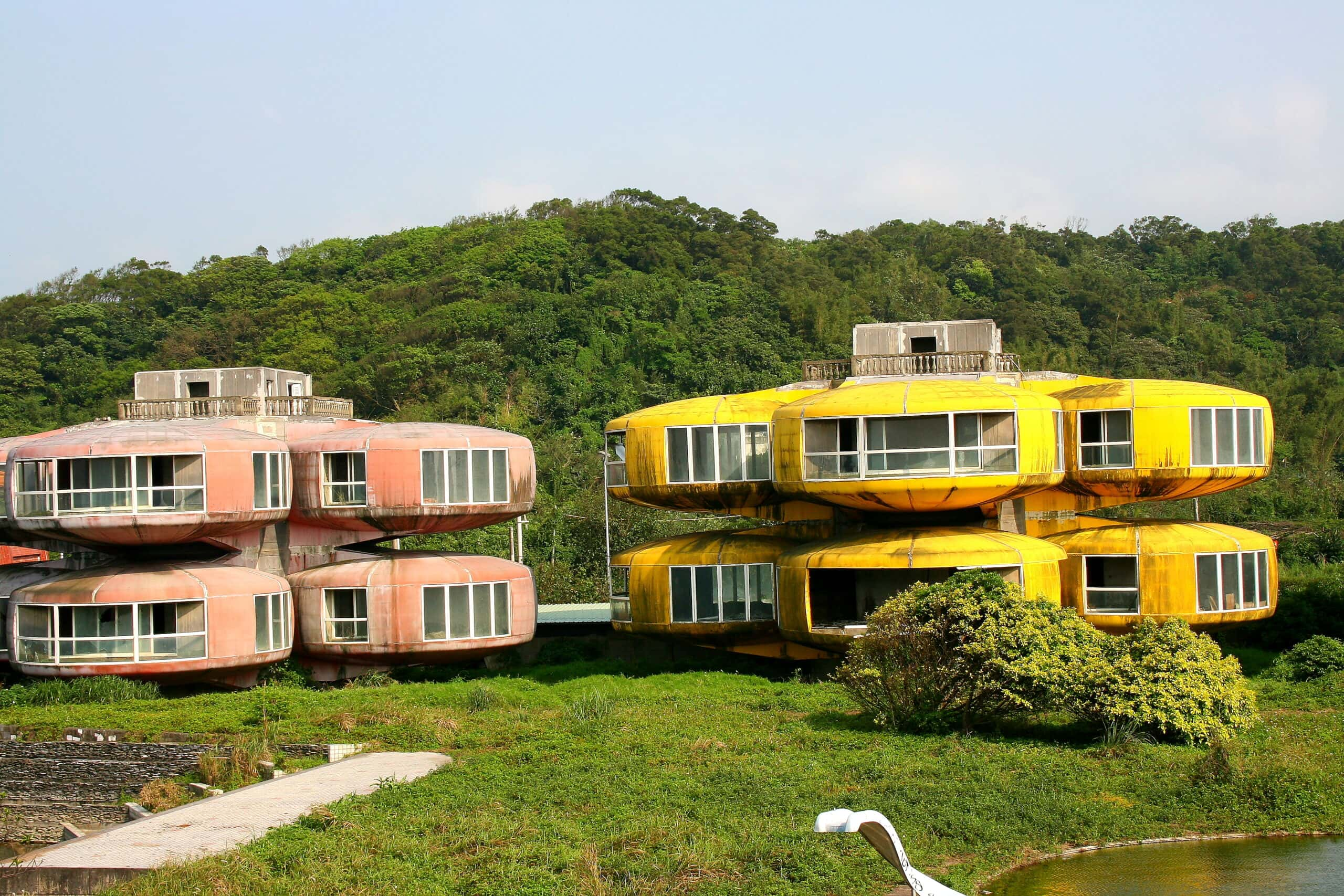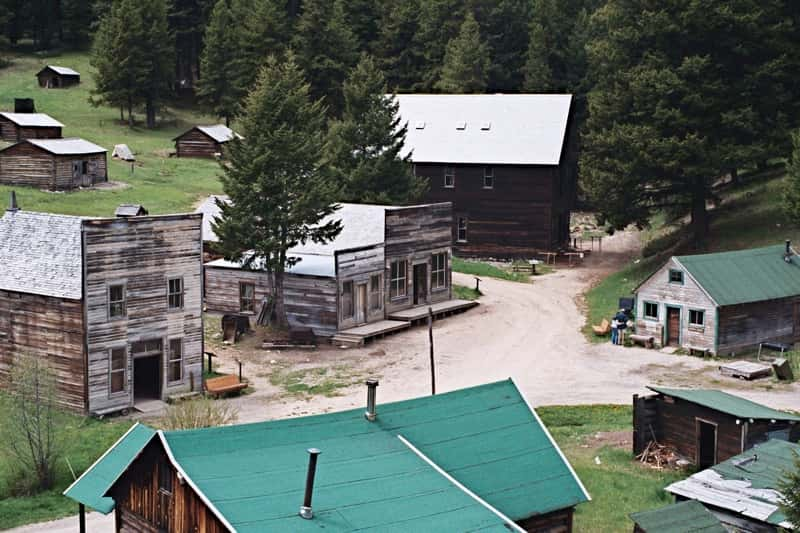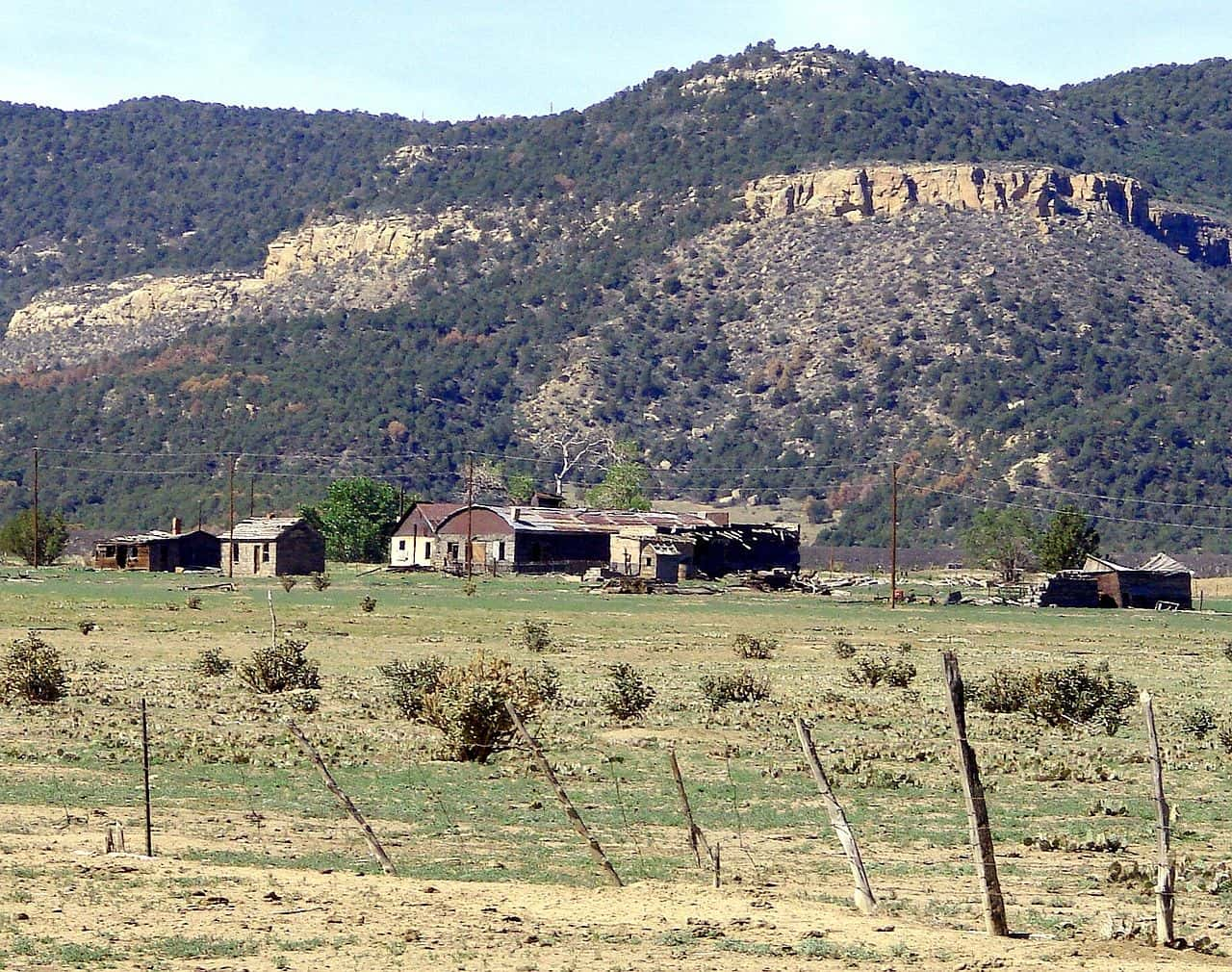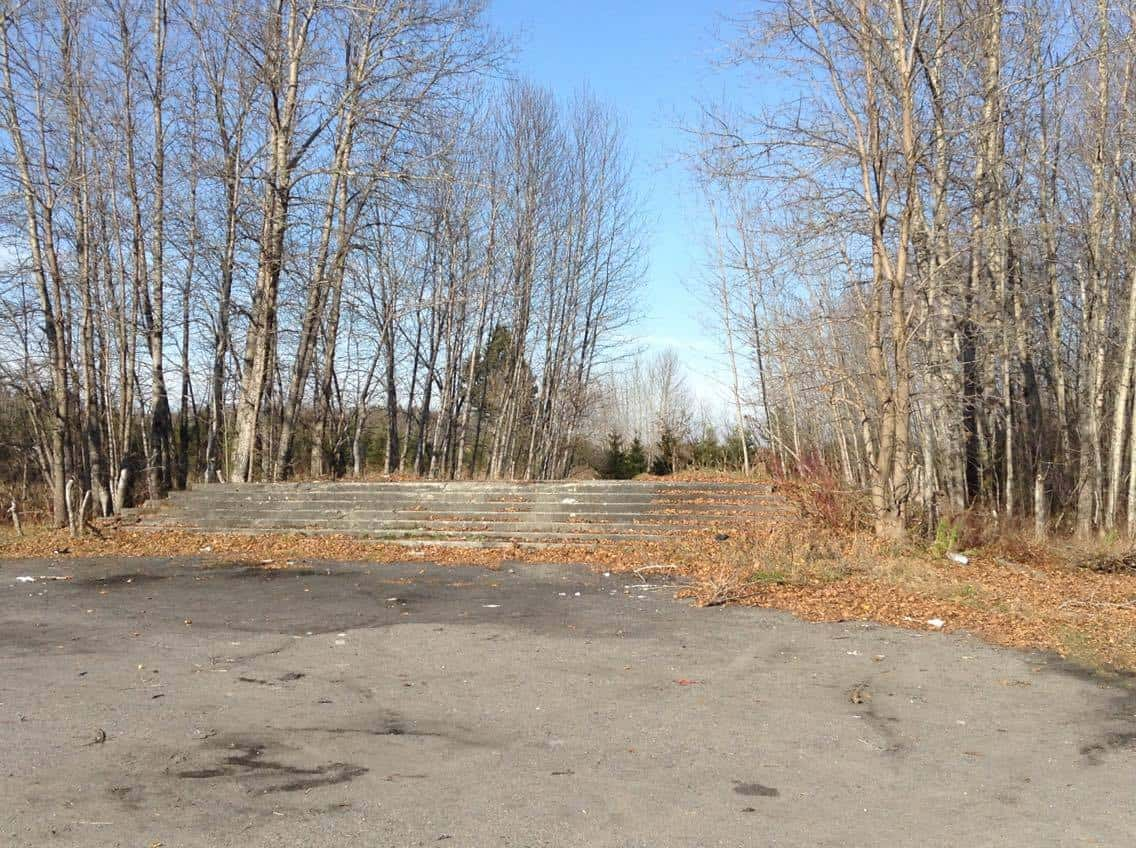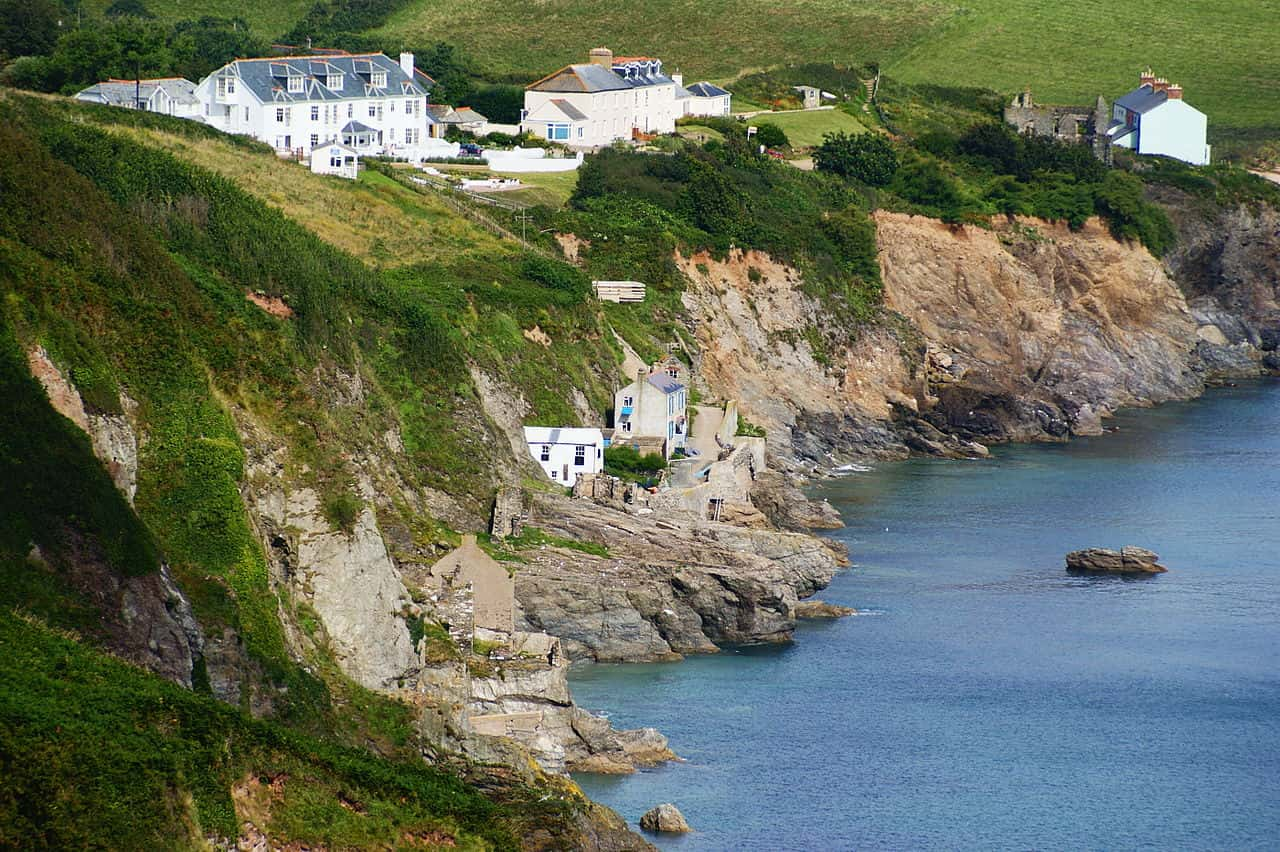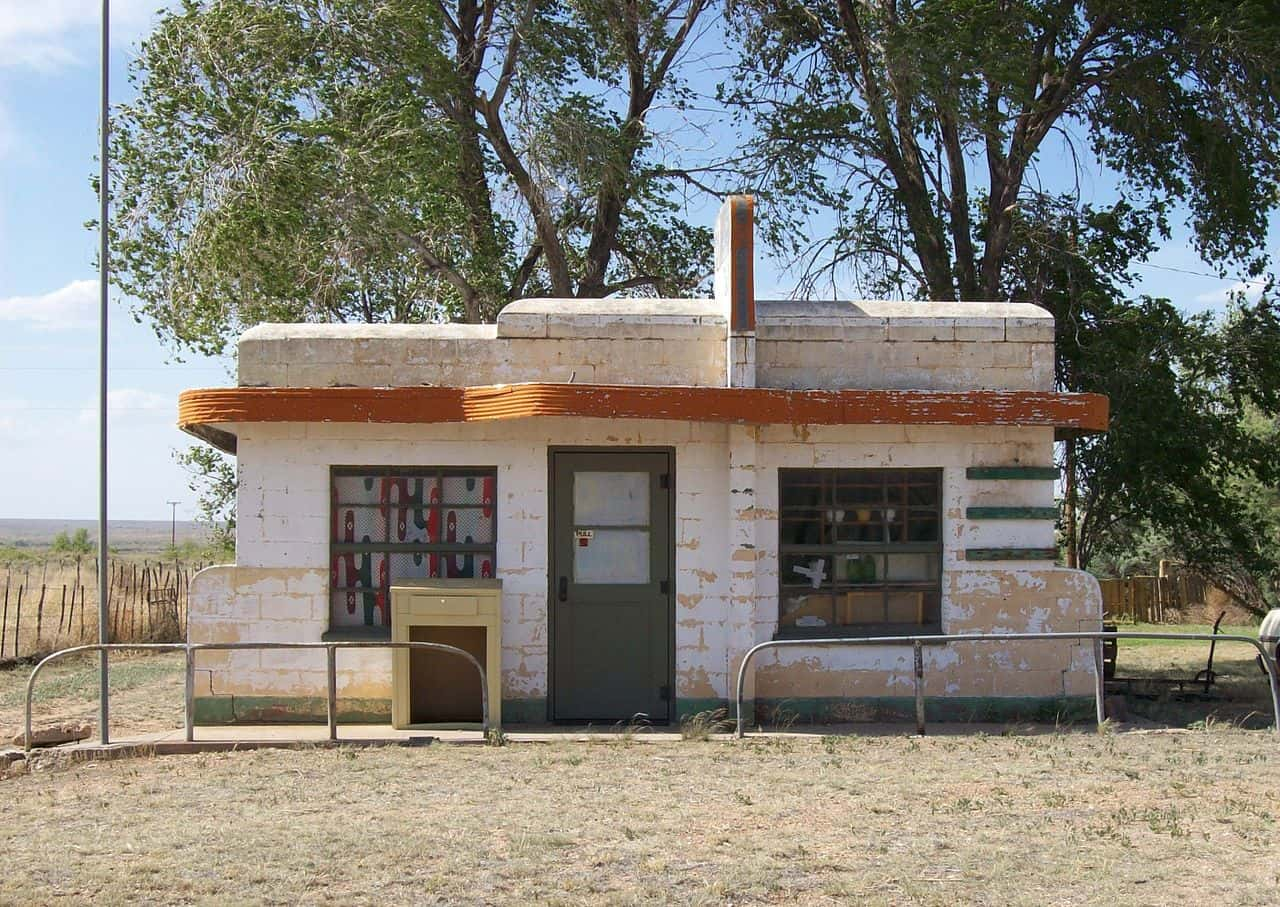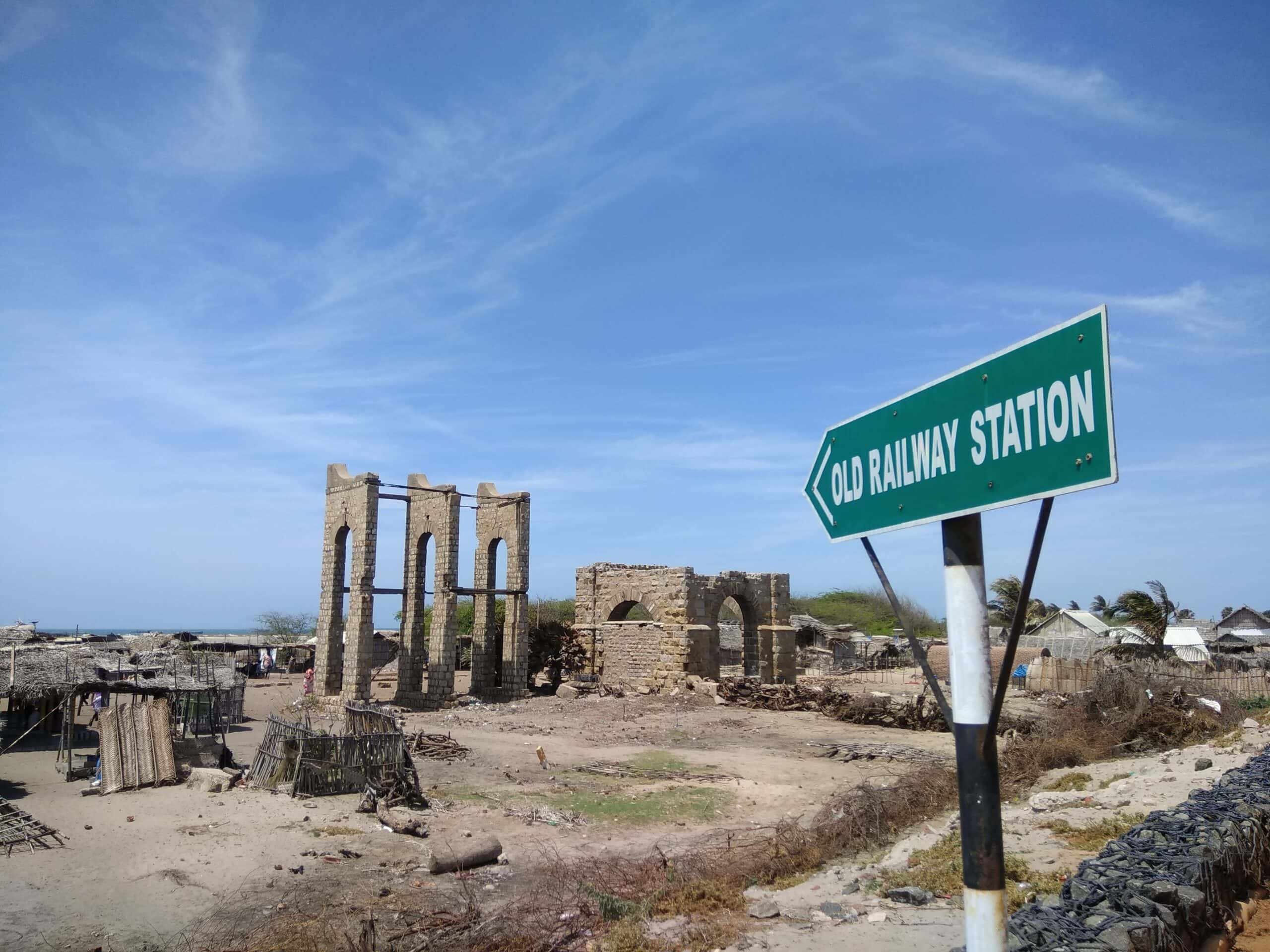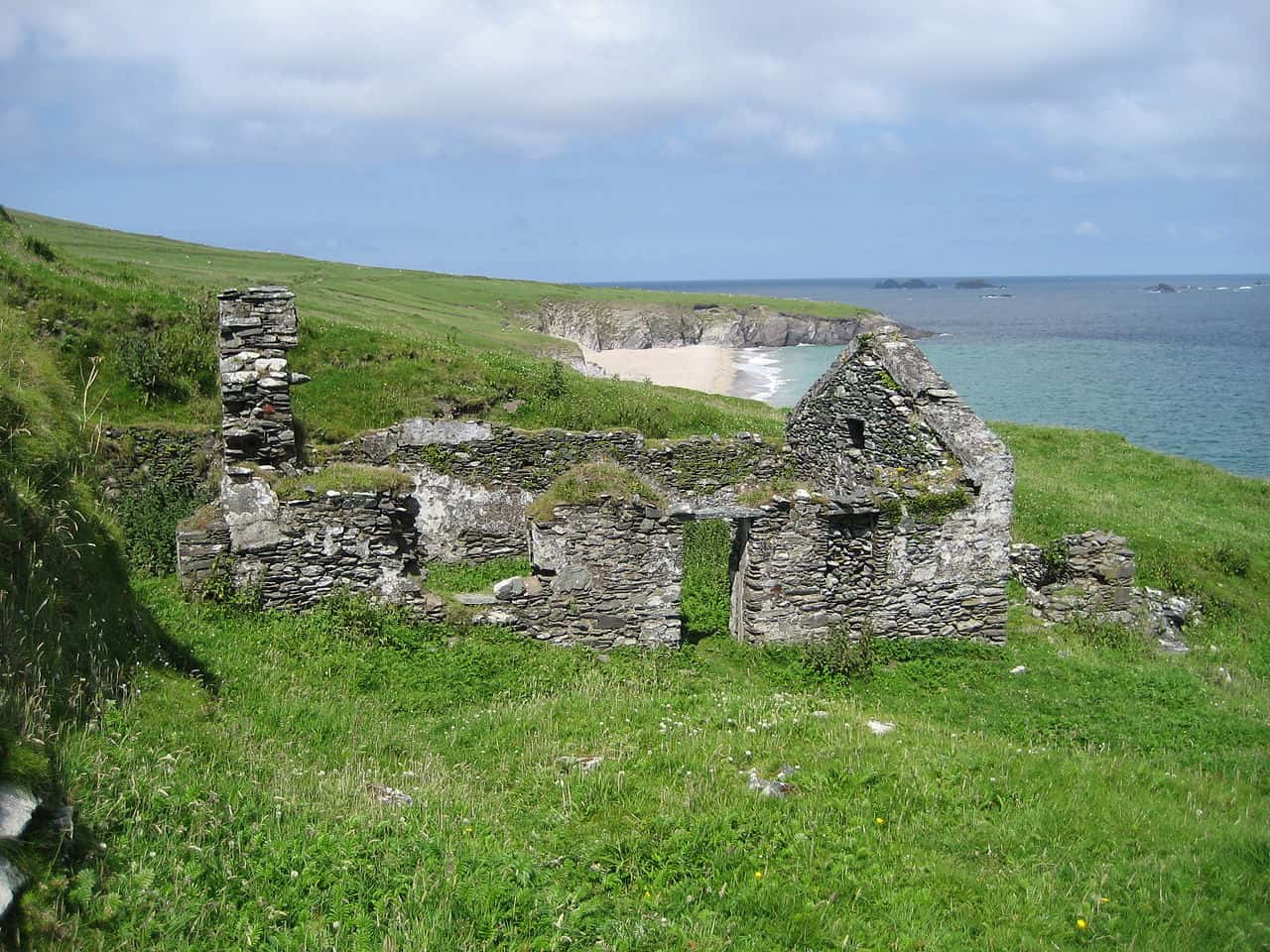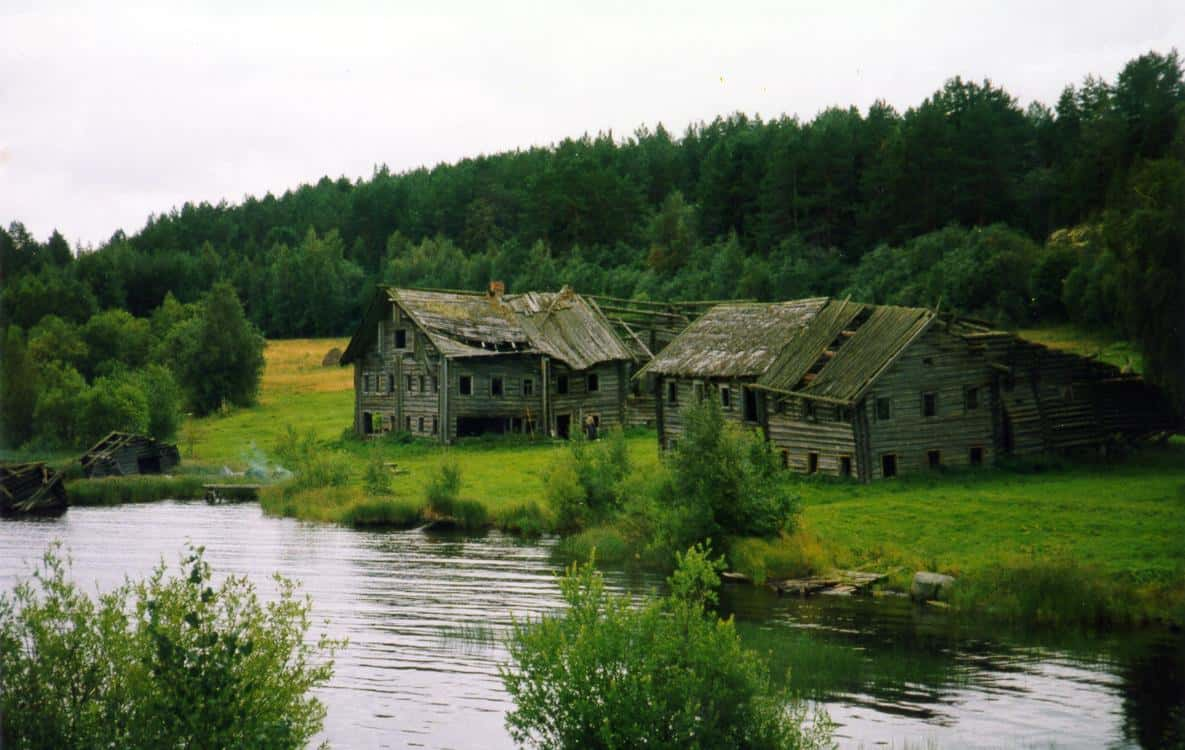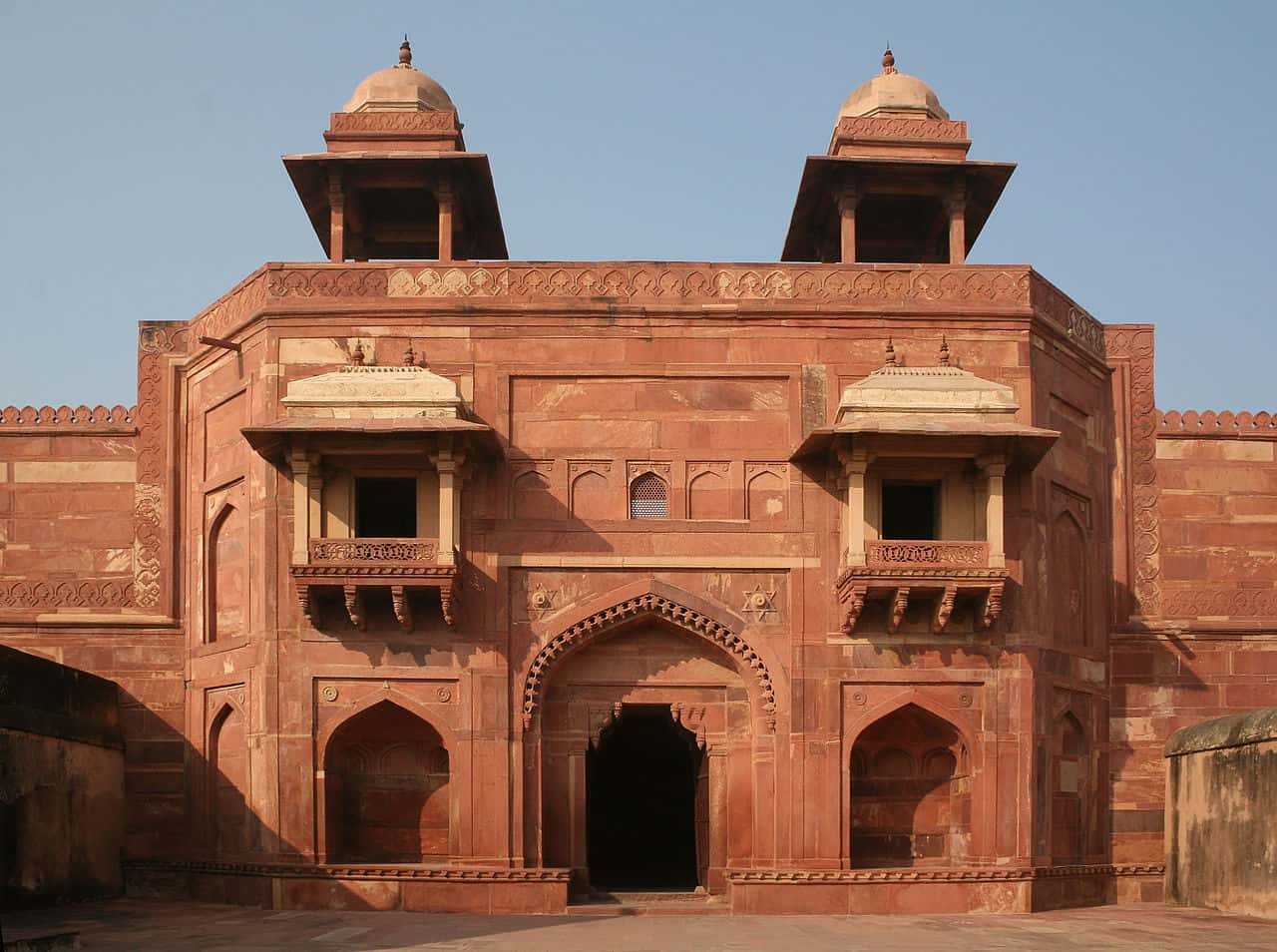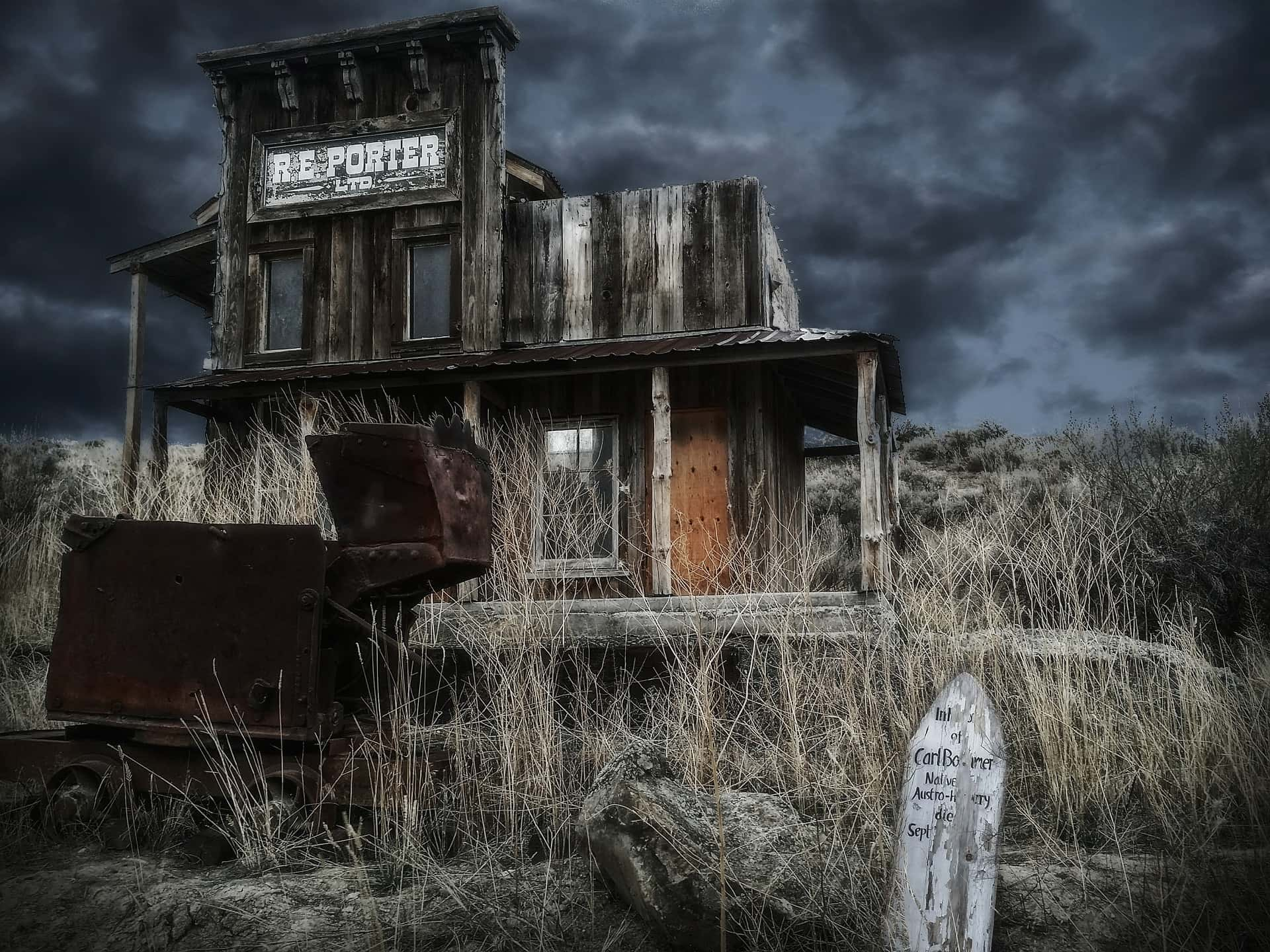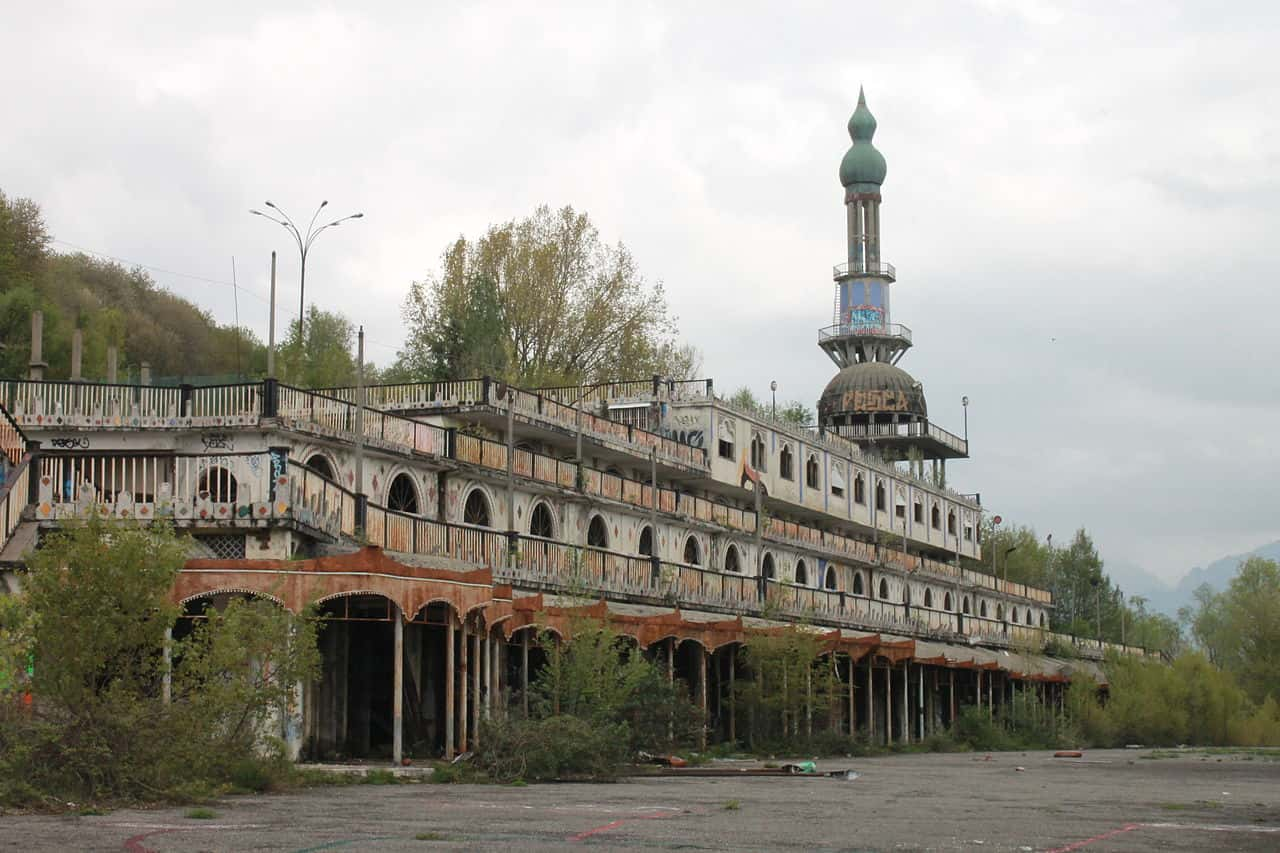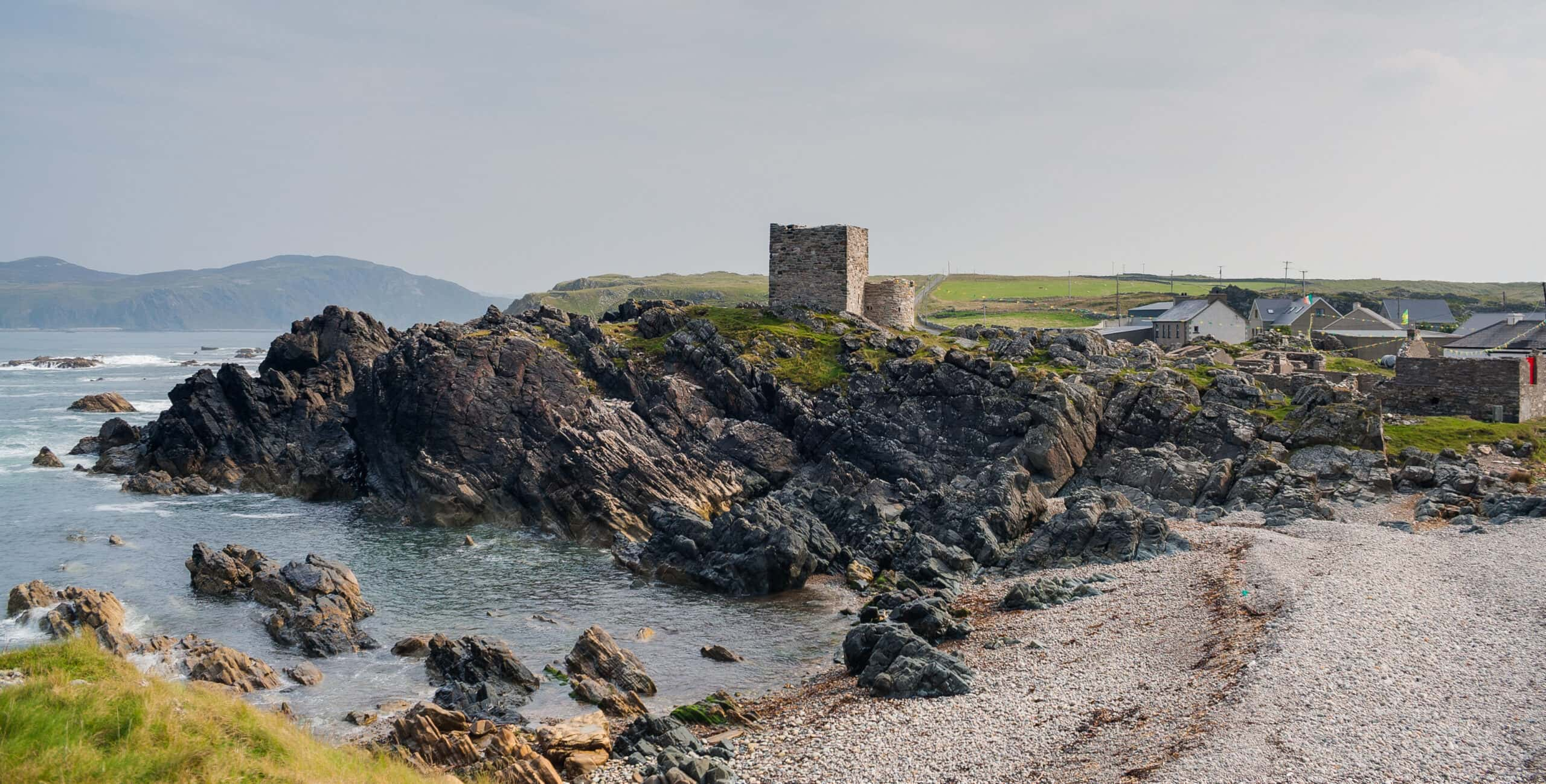Every ghost town has a story. Maybe people left because of an economic collapse. Perhaps they perished in a natural disaster. Something even more sinister may have happened. From "The Island of the Dolls" to the ancient city of Herculaneum, we're exploring the strange, tragic, and sometimes terrifying stories behind the world's eeriest ghost towns.
Ghost Towns Facts
1. Catastrophic Meltdown
The Chernobyl nuclear disaster is one of the most famous man-made disasters in history, and one of the casualties was the town of Pripyat, Ukraine. The once thriving town of 49,000 residents was evacuated within 36 hours of the disaster and is now home to wild animals, visited only by the odd urban explorer or former resident.
Over 30 years later, hundreds of letters sit un-mailed in the post office, toys and books are scattered in classrooms, the brand-new amusement park sits abandoned, and nature has taken over the remaining buildings.
Factinate Video of the Day
2. Caught Between Two Armies
Between 1936-1939 during the Spanish Civil War, the town of Belchite Spain found itself caught in the crossfire between the Republican and National Armies. Belchite was initially under Nationalist control but was taken by the Republicans after a long siege that lasted from August 24-September 7, 1937. The town was utterly and completely ruined, and when General Francisco Franco and the Republicans retook it in 1938, rather than level it, he decided to leave it as a kind of memorial.
The new town was completed in 1954, but the ruins of Belchite serve as grim reminder of the events that came before.
3. Floating Dolls
A long time ago, a girl was found mysteriously drowned on the Isla de las Munecas (Island of the Dolls) just south of Mexico City, and the island is no longer home to people, but to hundreds of creepy dolls with decapitated heads, severed limbs, and blank eyes that according to legend are possessed by her spirit. Witnesses claim to have heard the dolls whispering, and that the dolls lured them to the island.
The story may have been made up by the island’s caretaker Don Julian Santana Barrera, but the locals believe that the island is charmed, and that Julian, who was also found drowned in the same spot, also possesses the dolls.
4. Frozen in Time
On June 10, 1944, the French village Oradour-sur-Glane was almost entirely wiped out when 642 of the town’s residents (including 205 children) were brutally slain by SS officers. The men of the town were taken to a barn where their legs were shot at until they could no longer move. The soldiers then soaked them in gas and set them on fire.
To add to the horror, the women and children were led into a church where the pews had also been soaked in gas and set on fire. Anyone who tried to escape were shot. After that brutal day, the French president, General Charles de Gaulle declared that the town should never be rebuilt and stand forever as it was on that fateful day. I couldn’t live there. Could you?
5. They All Vanished
How do 600 people just vanish from a village without a trace and without explanation? This is the question that authorities in the Brazilian town of Hoer Verde are still trying to answer since all of the inhabitants vanished in 1932. Adding to the mystery is that there are no signs of anything unusual occurring. All of the buildings were left intact, none of the people ever turned up living anywhere else.
The political climate in Brazil was pretty tumultuous back then so it’s possible that the town evacuated to avoid a potential conflict with guerrillas, but since there’s no evidence that anyone ever passed through there again after the entire town disappeared, we’ll likely never know.
6. A Curse Upon Your Heads
The town of Dudleytown in Connecticut was supposedly founded by descendants of Edmund Dudley, a British Nobleman who was executed for treason in the time of Henry VII. Upon his execution, the family was supposedly cursed, and that curse followed them all the way to the Dudleytown. Before long, weird things started happening in the town, including reports of residents seeing daemons.
Not surprisingly, people started moving on to greener pastures, leaving only John Brophy and his family. Within a few months his wife died, his children walked into the woods and disappeared, and then Brophy’s house caught fire and he disappeared. Today, the land is owned by a group known as the Dark Forest Association, and nobody’s allowed to set foot in the town. They’re probably afraid that somebody else will disappear!
7. First One Back Wins
Hashima Island also known as Battleship Island in Japan is an abandoned island about 15km from Nagasaki. The island was in use between 1887-1974 as a coal-mining facility, but then the coal dried up and the facility was closed. Now since there was no disaster there would be plenty of time for people to pack their belongings and leave, but this wasn’t the case.
The workers were told they could keep their jobs if they went back to the mainland, but jobs would be handed out on a first-come-first-serve basis. This was enough of a reason for people to literally leave everything behind except the clothes on their backs. The island was abandoned for 30 years until 2009 when it was opened to tourists and has also been used in the James Bond film Skyfall.
8. Failed Utopia
Ordos Kangbashi in China was supposed to be a shining example of a new modern city. Bulit in 2004, it boasted world-class architecture, ornate public plazas, stadiums and more, and had room for 300,000 people. For whatever reason, people didn’t seem terribly interested in this new utopia, and it never attracted more than 70,000 people.
Eventually, most of those people also left, and the city went bankrupt. Some people blame the crash in coal prices for its failure, while others blame the media for labeling it a ghost city before it ever had a chance, but sadly, the mostly abandoned city is simply an example of failed promise.
9. Fleeing for Their Lives
Back in the 70s, Varosha, Cyprus was a popular vacation spot for the rich and famous, and its beaches played host to the likes of Elizabeth Taylor and Brigit Bardot. The fun ended in 1974 when Turkey invaded Cyprus and occupied its northern third. All of the 15,000 residents fled, leaving their stuff and their lives behind. Most assumed that they’d eventually be able to come back, but that never happened.
Today it’s a ghost town hidden behind a heavily guarded barrier. Nature has reclaimed most of the buildings, but you can still get a glimpse of the past by looking through shop windows and in car dealerships. It seems a shame to let such pristine beaches go to waste, but it would take an estimated $12 billion to even bring it back to a liveable state so that’s not likely to happen.

History's most fascinating stories and darkest secrets, delivered to your inbox daily.
10. The Town Atop a Cliff
If it was possible for mother nature to have it in for a place, Craco Italy would definitely be at the top of that list. The medieval hill town is located atop a 1300-foot cliff overlooking a river valley, which sounds pretty scenic, but the location also made it vulnerable to the elements, and that’s what ultimately turned it into a ghost town.
The town managed to survive the Black Plague in the 1600s, but repeated earthquakes, landslides and floods throughout the latter half of the 20th century forced residents to evacuate and reduced it to ruins. Amazingly, the one thing in the town that remained untouched is a statue of the Virgin Mary, and if you’re brave enough to chance getting caught in another natural disaster, guided tours are available.
11. What A Name
Helltown Ohio (formerly known as Boston, Ohio) is one of the creepiest ghost towns in the US with reported crying bridges, haunted school buses, human sacrifice sites, and a mutant python. Officially, none of those things had anything to do with why the town was abandoned. In the 1974 the U.S. National Park service purchased the homes and evacuated the town with the intention of building a park, but it never happened, and the town is closed off and abandoned.
Nobody knows whether or not there was another more sinister reason why the government forced everybody out, but it hasn’t stopped the legend from growing.
12. Abandoned Prison Colony
If you thought Alcatraz was bad, then you obviously haven’t heard about the now-abandoned prison colony Port Arthur Tasmania. Founded in 1830 as a timber station, it was so isolated that the British authorities figured out that it was a great place for a prison and it was converted into Australia’s biggest and most infamous prison colony for re-offenders.
The prison closed in 1877, and since then there have been reports of ghosts, and odd noises including a church bell that hasn’t been in use for many years.
13. Boomtown Bust
During the California Gold Rush, tons of mining towns such as Bodie, California sprung up across the state. At its height, there were about 10,000 residents, a reported 65 saloons, and gold findings worth approximately $34 million. In the early 1880s prospectors started moving elsewhere, and whatever they couldn’t carry, they just left behind including furniture, fully stocked bars, and supplies in stores.
By 1962 the town was completely abandoned, and today it’s one of California’s most well-preserved ghost towns. Don’t even think about trying to take a souvenir from the town though. Legend has it that a ghost protects the town from thieves!
14. Red Island
On the northeastern tip of the United Arab Emirates is the abandoned fishing village of Al Jazirah Al Hamra which translates to Red Island. Before the UAE became all about oil in the 1960s, it was a flourishing village with a population in the thousands. Around 1968, most of the residents abandoned the village, and it’s increasingly become known for being haunted.
The village is reputed to be home to djinns (a supernatural creature in Islamic mythology) who leave handprints in the ground as a warning to anyone who tries to enter the village. Some of the locals have tried to deny the existence of djinns, but since they aren’t exactly the friendliest of creatures, do you really want to find out?
16. Doomed Paradise
In 1927, car mogul Henry Ford started work on an experimental town in Brazil known as Fordlandia. The rubber boom was in full swing, and Ford needed a continual source of rubber for his cars. He designed Fordlandia as a company town with swimming pools, a golf course, bungalows, and weekly square dances, all with the goal of recreating smalltown America in the Amazon. His experiment seemed cursed from the start.
The rubber trees contracted a leaf fungus, the workers clashed with the American managers over the strict regulations (including an alcohol ban), and it failed to ever produce any rubber. In 1945, after throwing away $20 million on the city, he sold it to the Brazilian government for a song. Many of the original buildings still stand, but the majority of the city has been taken over by wilderness.
17. A Ghostly Tour Guide
The once thriving village of Romagnano al Monte, Italy was leveled by an earthquake in 1980, registering 3000 casualties at once. The survivors of the quake made the wise decision to rebuild their village 20km away from the ravished site, and what was left of the town was abandoned. Despite the location being deemed too dangerous to enter for many years, people were still seen wandering the streets dressed in traditional clothing, and tourists have claimed to have been led on a tour of the city by an old woman speaking Italian.
What’s especially odd about this is that there are no registered tour guides in the city and the government denies her existence. She’s also been reported to simply vanish with the blink of an eye. Spooky!
18. Taking it Off the Map
Once upon a time, Wittenoom Australia was a thriving mining town. Founded in 1946, there was an abundance of blue asbestos which was a key building material in the first half of the 20th century. Unfortunately, as people started realizing that asbestos was actually pretty harmful, the demand for the material dried up, and the mine was forced to close in 1966.
Most of the residents moved away to find other work, and in 2007, Australia actually went as far as to remove the town from official maps to limit access. For whatever reason 3 individuals have elected to remain in Wittenoom, despite the fact that the asbestos in the soil and the air make it a pretty dangerous place to hang out.
19. It Belongs to the Desert Now
In the early 1900s, German miners flocked to Kolmanskop, Namibia seeking to make their fortunes in diamonds. Buildings were designed with German architecture which didn’t quite fit the desert town, but it was actually pretty luxurious and even had the first x-ray station in the Southern Hemisphere. In 1928, a new and more diamond rich area was discovered along the coast, and before you could blink, most of the residents took off for the new site leaving their belongings behind. The buildings have mostly been destroyed by the wind and the desert, but if you don’t mind getting some sand in your shoes, you can take a guided tour.
20. City of Marble
Deep inside Central Asia lies the sovereign state of Turkmenistan and the city of Ashgabat which is a veritable ghost town. When the Soviet Union collapsed and the country gained sovereignty, the president planned for a grand city, and even broke records for becoming the city with the most marble buildings in the world and the world’s largest Ferris wheel. For all of the city’s glitz and glamor, it’s mostly empty, and the strict visa rules and 70% desert doesn’t exactly attract visitors.
21. A For Effort
In 1943, it wasn’t uncommon for governments to requisition land for the WW2 effort, and this is what happened to the small village of Imber located in Wiltshire, UK. The residents were given 47 days to move out and were generally ok with it since it supported WW2. What they weren’t quite as cool with was not being allowed to return after WW2 was over.
The army decided that the land was too valuable to them to give it up, and despite numerous court challenges, the only ones allowed back were the dead who could be buried in the church. All that remains of this quaint little village is the church and whatever ghosts reside there.
22. Founded by Hercules
According to legend, Hercules founded the city of Herculaneum in Italy when he completed his 12th labor. When Vesuvius erupted in A.D. 79, everyone knows what happened to Pompeii, but just 15 miles south, Herculaneum was also destroyed when it was buried in a stream of volcanic mud. The lava turned to stone and preserved the town, and archaeologists have uncovered everything from buildings to the remains of 300 people who had been waiting for rescue. Tragic!
23. Burning City
One hundred years ago, the town of Centralia, Pennsylvania was a busy mining community nestled in the mountains, but an underground fire that has been burning since 1962 (yes, you read that right!). Nobody is quite sure exactly how the fire started, but it’s likely that it had something to do with the abandoned mine that had been converted into a garbage dump that year. The city’s solution for cleaning up the dump was to burn it, and somehow it seems to have caused a larger fire in the coal seam underneath the town.
Fire fighters tried and failed multiple times to put out the fire, and eventually, the only solution was to kick everybody out, condemn the buildings and eliminate the zip code. As Greg Walter wrote for People Magazine in 1981 it got so hot in some places that “Even the dead cannot rest in peace” and yet for some strange reason, seven people held out and refused to leave.
24. The Indestructible Town
Back in 1911, a coal company built a town for their miners which is now known as Concrete City. The homes were built entirely of concrete, which also meant that every home needed a garden hose to wash the waste from the mines off of their walls. When the township demanded that a new sewer system be installed in 1924, the new owner decided not to bother, and the settlement was abandoned. Oddly enough, even 100 sticks of dynamite couldn’t destroy the structures, but they aren’t immune to bullet holes caused by fire training exercises. Go figure!
25. A Biological Menace
Kantubek, located in Uzbekistan (formerly the USSR) was once a village on the shores of an island in the Aral Sea with a population of 1500 people but today is an abandoned and uninhabitable ghost town. Never mind that between climate change and various hydroelectric projects the Aral Sea no longer exists, but it’s also said that the Soviet government used it to test biological weapons as far back as the 1930s (hopefully not while people lived there) and living there now would probably be lethal. There’s no more fresh water in any case, so there’s no earthly reason why anyone would want to.
26. Not Cost Effective
Ireland’s Eye, Newfoundland was a fishing village dating back to the 1500s whose first residents were seasonal workers left there by dodgy captains. The village managed to survive the harsh Newfoundland weather, not having any cars, electricity, or plumbing, and basically stayed frozen in time with little change. Unfortunately, as happened with similar villages, the Canadian government emptied it out and resettled the residents in the 1960s branding it “uneconomical”
27. Scariest Place in India
The town of Bhangarh, in RajasthanIndia has been labeled one of the scariest, most haunted places in India to visit. In fact, it’s so scary that visitors aren’t allowed in there after sunset! The legend tells of a magician who was in love with a princess and when his love was unrequited, he decided to curse the whole city, declaring that it be abandoned forever.
28. Christmas Town
The last place you’d expect to find a town named Santa Claus is in the middle of the Arizona desert, but California real-estate agent Nina Talbot and her husband founded the town in 1937 hoping to convince people to move to the desert. The Christmas-themed town became a popular tourist attraction for a while, but nobody bought land. 12-years later, the Talbot’s acknowledged defeat and sold it. The town sort of kept going in the 50s and 60s thanks to a really successful restaurant, but by the 70s it was a mere shell, and the last of the businesses closed in 1995, leaving only graffiti-covered ruins and a wishing well.
29. When the Copper Dried Up
Abandoned once and for all in 1938, Kennecott, Alaska was a booming copper-mining site in the early 1900s. Developer Stephen Birch invested millions in building a railway line, purchasing a steam ship, and developing the mines. By 1929-1930, most of the copper was gone, and people started leaving Kennecott for greener pastures, not even bothering to take their belongings or equipment with them. In the 60s, a company with land rights ordered the destruction of the town, but the job was never finished and most of the town, including the mill still stand today.
30. A Little Too Wet
From 1820-1825, Cahawba had the distinction of being the first permanent state capital of Alabama. The problem with Cahawba turned out to be its location which was at the confluence of the Alabama and Cahaba rivers, and made it extremely prone to flooding. The Alabama Legislature wisely decided that finding a different location for the capital would be a good idea, and not surprisingly, the settlement was gradually abandoned and became a ghost town. Who’d want to live under water.
31. Cursed Town
200 years ago, India was ruled by powerful kings and ministers, some of whom weren’t exactly the most ethical people. In the town of Kuldhara, Salim Singh, the Diwan of Jaisalmer (finance minister) was one of those people. As the story goes, he wanted the chief’s daughter, and he told the villagers that if they interfered, he’d slap them with huge taxes.
Everybody was terrified of this dude, and rather than risk his rage, everybody in the village just packed up and left overnight. Nobody saw them leave, and for over two centuries, nobody has been able to figure out where they went. What they do know is that they put a curse on the town when they left, stating that nobody could ever settle there again.
32. Home of Typhoid Mary
North Brother Island, New York is definitely not an island paradise. Located in the East River off the South Bronx, it’s been off-limits and abandoned for decades and has remained untouched by developers (which is saying something considering the price of New York real estate). The island might have been settled by the Dutch in the 1600s, but beginning in the 1880s, the island was used as a quarantine for people with infectious diseases such as tuberculosis and typhoid fever.
Most famously, it’s the place where Typhoid Mary was forcibly quarantined in the 1900s. In 1946, it was converted into a home for men returning from WW2, and then in 1951 it returned to city control and became a home for young drug addicts. The treatment success didn’t match the cost of running it, and the island was basically abandoned to nature.
33. When Nature Has Other Ideas
During the British rule of India, they were searching for a good place to build a jail and discovered several islands around Port Blair. They built the facility on Viper Island and beginning in 1858, they made the prisoners build a township on Ross Island to house their headquarters. The town was built to imitate a British town and stayed that way for 80 years until nature fought back.
A catastrophic earthquake destroyed the island and the settlement in 1941, forcing the British to abandon the island. The island was briefly held by the Japanese during WWII but was given back to the British after just three years. Maybe they didn’t like the weather!
35. Longest Poker Game in History
Thurmond West Virginia was once a booming coal town with a population of 500 and was the location of the longest poker game in history which lasted 14 years. Named after founder and Confederate Army Captain, W.D. Thurmond, he settled there in 1844, and the town grew, thanks in part to the construction of a railway crossing at Dunlop creek in 1892. Of course, growth means new people, and Thurmond, not liking the strangers in town banned alcohol from his lands.
On the other hand, the rival family the McKells, the ones who owned the railway crossing, were fine with the alcohol and their side of town was party town. In 1930, the hotel was burnt to the ground by arsonists, and that marked the beginning of the end for the town. The Thurmond National bank closed in 1931, and by the 1950s it was a ghost town. As of 2010 five people still live there, but they’re government employees so they don’t count.
36. UFO Pod City
Construction on the UFO pod city of Sanzhi, Taiwan began in 1978 and was intended as a resort property that would attract U.S. military personnel with East Asian postings. The design was inspired Matti Suuronen’s “Futuro” housing, and the homes looked like UFOs. Based on the series of unfortunate events that occurred from the very beginning, one might have thought that the project was cursed.
First, a ceremonial dragon statue was destroyed to allow easier access for the construction vehicles, and it all went downhill from there. There were a number of fatalities during construction, a series of mysterious car accidents on a neighboring road, and at least one suicide. There were also rumors that the remains of 20,000 17th-century Dutch fighters were unearthed on the site.
By 1980, they’d had so much bad luck that they went bankrupt and abandoned the project. Sadly, in 2008, demolition began on the city and nothing was saved, but it was a pretty creepy place to visit for about 20 years.
37. Nobody Here but Us Ghosts!
Garnet, Montana is one of Montana’s best-preserved ghost towns, and if the stories are to be believed, one of the most haunted. The town grew quickly in the 19th century with the discovery of gold and silver, but as happens, the mines ran out about 20 years later, a fire in 1912 destroyed many of the commercial buildings, and it was never rebuilt.
The final nail was the onset of WWI which led to the ultimate abandonment of the town. If you’re interested in old mining towns, it’s open to tourists, but be prepared to meet some ghosts in the haunted saloon and hotel who can even be heard in the middle of winter when only one person is there to oversee the town.
38. Strike Turned Deadly
Worker strikes can be uncomfortable and inconvenient for employers, but they don’t usually end up killing them. Tragically, in 1913 in Ludlow, Colorado, thanks to some vicious strikebreakers, the strike turned deadly and between 19-26 people died, including women and children. During the strike, the families were kicked out of company housing and moved to tents which were monitored by the strikebreakers who got their jollies out of driving around in a railcar with a machine gun attached.
On April 20, while the camp leader was meeting with the leader of the militia, the strikebreakers set up a machine gun on the hill overlooking the camp. The terrified miners confronted the militia and a fight broke out. The conflict escalated, and the tents were set on fire. In 1916, the United Mine Workers of America bought the site and put up a monument to the dead, but since those events, Ludlow has remained a ghost town.
39. When the Ground Slid Away
In 1971, the town of St. Jean Vianny, Quebec had a shock when the ground literally slid away from beneath them taking 40 homes and 31 lives with it. 12 days later, a second mudslide in nearby Eastern Ontario prompted a study of soil conditions in the Ottawa-St Lawrence lowlands. Lo and Behold, the study revealed that the mill town of Lemieux Quebec was at risk for a similar fate as St. Jean Vianny.
In 1989, the South Nation Conservation Authority (SNRCA) informed the residents of tehir findings and told them that they’d have to be relocated. The town was officially abandoned in 1991, and as it turned out, that was just in the nick of time because 2 years later the main street slid away in a mudslide.
40. Collapsed into the Sea
The village of Hallsands in Devon, England was a cozy little fishing village that had existed since at least 1506 but was wiped away in one tragic night in January 1917 when it collapsed into the sea. The most tragic part about it was that it was largely the fault of man. In the 1890s, the British Admirality decided to expand the naval dockyard at Keyham, and the Board of Trade gave the engineering company permission to dredge the shingle (rocky) beach.
Three years later, storms hit the coastline and swept away part of the sea wall. On January 26, 1917, another killer storm struck, and this time, the entire village fell into the sea. Thankfully nobody was killed, but dozens of homes were lost. All that’s left are the ruins of a chapel on the edge of a cliff top.
41. A Casualty of Route 66
US Highway 66 otherwise known as Route 66 was the first all-weather highway that linked Chicago and Los Angeles, shortening the route by 200 miles. Obviously, the shorter distance and scenic drive made the route popular with drivers, which led to several route 66 towns springing up along the highway. One of these towns was Glenrio, which sat right between the borders of New Mexico and Texas. Because of its unique location, some odd practices took place in the town.
Mail arrived in Texas by train but was transported to the post office in New Mexico, and all gas stations were on the Texas side because gasoline taxes were cheaper. When Route 66 was replaced with the even faster and less scenic Interstate 40, nobody had any reason to travel there anymore and by the 1980s, it was a ghost town.
42. Marooned Town
Several decades ago, Dhanushkodi India was a busy and prosperous town. There were houses, a church, a temple, a post office, and a railway station, and thousands of people called it home. That is until 1964. On December 22 of that year, a major cyclone with winds of 170 mph whipped across the town, leaving it in ruins and isolated. 1800 people lost their lives that day, and the Madras government wasted no time declaring it unfit for habitation, leaving it a ghost town.
43. Cut Off from the Mainland
The Basket Islands in Ireland are made up of a group of 6 Atlantic islands, and for centuries, people lived a traditional Irish life of fishing, farming, and weaving, and spoke a dialect of Irish that remained largely unchanged over centuries. In 1953, the remaining 22 residents on the islands were forced to evacuate to the mainland because of unstable weather patterns and having no means of communicating with the mainland or requesting emergency assistance. Today people do live there during the summer, but it’s just not fit to stay there year round.
44. Decaying Settlement
Built sometime in the 1770s, mystery surrounds the abandoned settlement of Pegrema on the shores of Lake Onega. Nobody knows for sure what happened to the picturesque wooden village, but it’s presumed that it was abandoned after the Russian Revolution.
45. A Meal and a Rest
The little town of Swords in Parry Sound in Sequin Township Ontario used to be stop on Booth Railway, which was named after the Canadian lumber tycoon and railroad baron John Rudolphus Booth and brought the lumber industry to the area in the late 1800s. The hotel, opened by John Sword, was a popular tourist destination for Americans heading into the wilderness. When the lumber mill closed, tourism dried up and the trains stopped coming. The store and the last of the businesses closed in the mid 1960s.
46. A Royal Ghost Town
Centuries ago, Fatehpur Sikri in India was the capital of the Mughal Empire. Located just 40km away from the Taj Mahal (also built by the Mughals) It’s builder Mughal Emperor Akbar wanted it to be the most beautiful city ever built, and while it was, but there was a huge problem- there was no easy access to water. People can’t really live in a place without water, so a few years after its completion, the town was abandoned and the capital was moved to Lahore in what’s now Pakistan.
47. Fire at the Mill
Nicholson Ontario was founded in 1903 by the Austin-Nicholson lumber company and its residents were mostly Finnish or Franco-Ontarian. By the early 1910s, the town had a Canadian Pacific Railway Station, a post office, an Anglican Church and a school- everything a town needed at the time. The mill was profitable and probably could have continued to be so, but in 1933 it burnt down and wasn’t replaced due to cost-saving efforts by the company during the Depression.
By 1963 the remaining businesses had closed and the rest of the residents moved away, and sadly, another fire destroyed most of the surviving buildings before it could be preserved as a historic site.
48. Italy’s Vegas
Italian entrepreneur Mario Bagno had a vision that the city of Consonno, which he called the City of Toys, would be Italy’s Las Vegas. Luck wasn’t on his side, and a few years after his city opened, a landslide wiped out the only road, making it impossible to reach. He tried to get the project going again but was never able to get the tourists back and the city has gone to ruin.
49.Built and Abandoned
Kitsault, British Columbia was practically built overnight in 1980 when the US mining company Phelps Dodge discovered the highly in-demand metal molybdenum and workers were needed yesterday to dig it up. Unfortunately, just two years later, the price of molybdenum crashed, and having lost their jobs, the employees had no choice but to move away. Immediately after that, the gates were locked, and Kitsault became a ghost town with nobody allowed in except for a few caretakers.
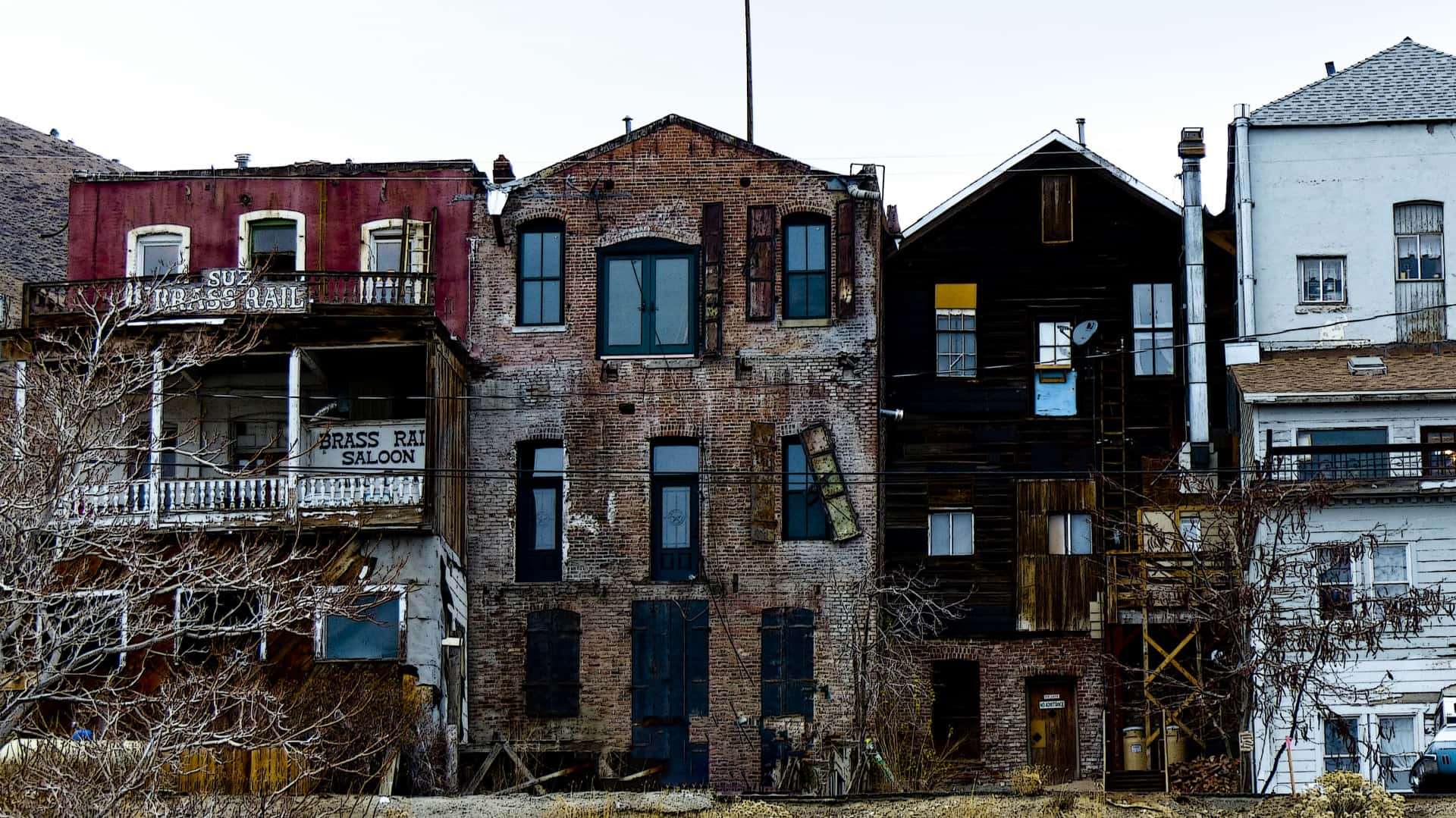 Public Domain Pictures
Public Domain Pictures
50. Starved Out
During the Great Irish Famine of 1842-1856 many of the residents of the ancient village of Donegal (and all of Ireland) were forced to leave. What makes this village unusual is that the entire village seems to have left, and it’s completely deserted. Nobody knows for sure what happened to anybody who might have stayed behind, but it’s possible that they simply grew too weak from hunger and died.
Sources: 1, 2, 3, 4, 5, 6, 7, 8, 9, 10, 11, 12,13, 14, 15, 16, 17, 18, 19, 20, 21, 22, 23, 24, 25, 26, 27, 28, 29, 30, 31, 32, 33, 34, 35, 36, 37, 38, 39, 40, 41, 42, 43, 44, 45, 46

